Impact & Sustainability Report

Craigmore Sustainables | 2022
Disclaimer
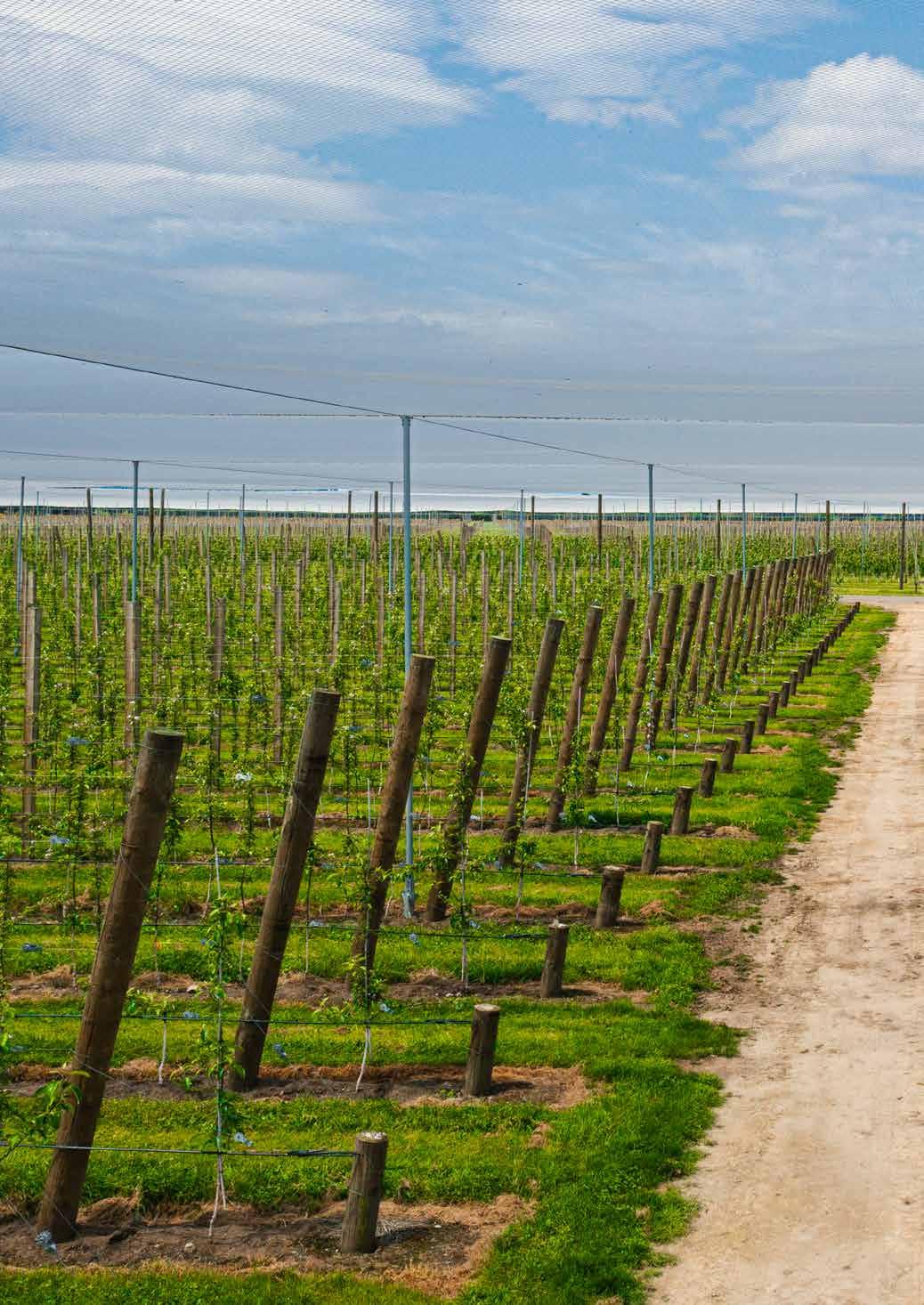
Report published October 2022
The views expressed herein are those of Craigmore Sustainables LLP as of September 2022 and subject to change at any time based on the market and other conditions. This is not an offer or solicitation for the purchase or sale of any security and should not be construed as such. Performance indicators are estimates only and actual results may differ materially from those described herein. Forecast and forward-looking statements are based on the reasonable beliefs of Craigmore Sustainables LLP and are not a guarantee of future performance.
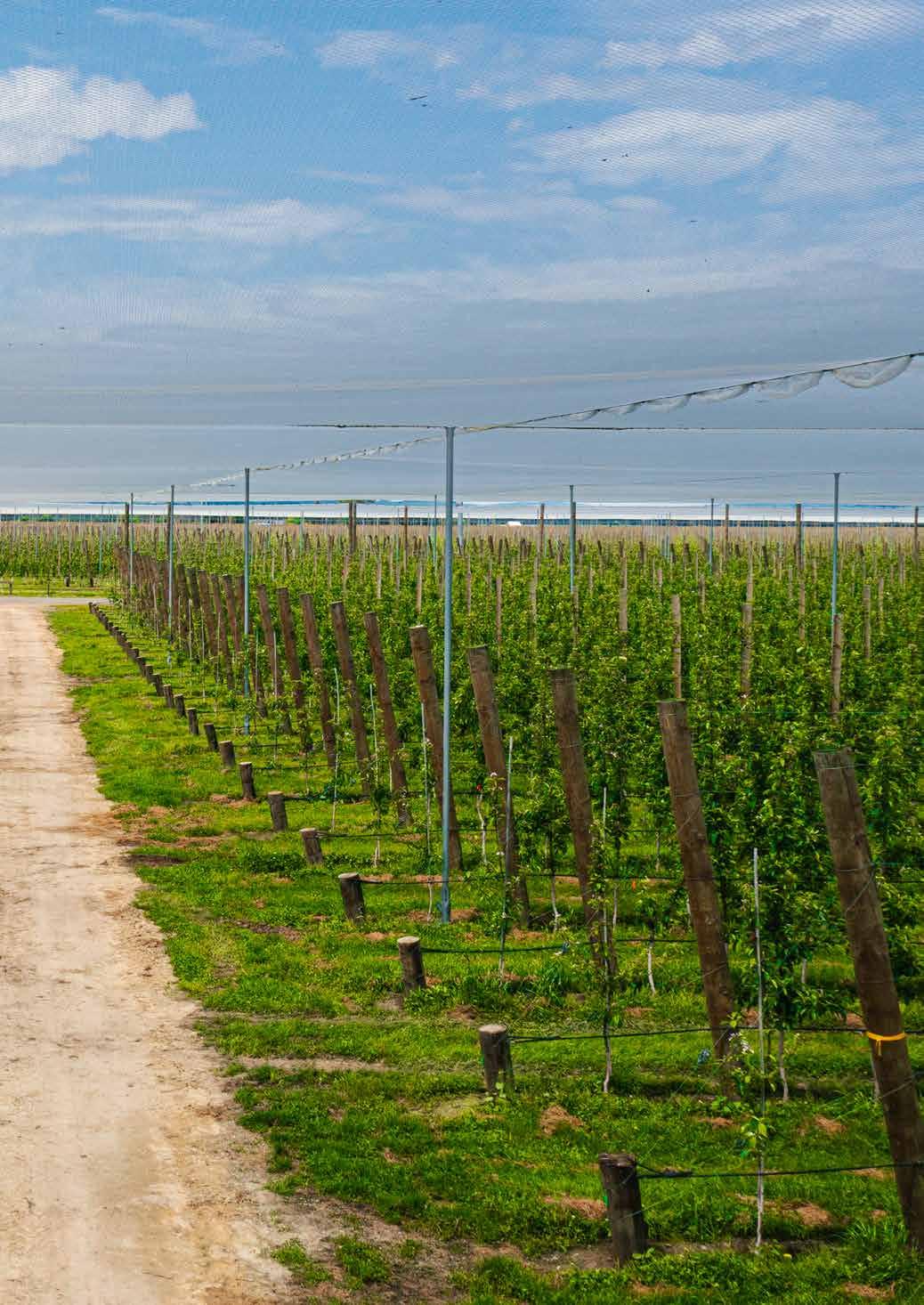

Introduction 01 CEO Statement 02 Our Vision, Strategy & Values 04 Growing Greater Good 06 Map of Operations 11 Our Sectors 12 Governance 18 Governance Bodies 20 Governance Structure 21 Governance Members 22 Risk Management 26 Principles of Responsible Investment 30 & UN Sustainable Development Goals Environment 32 Greenhouse Gases 34 Soil 40 Water 44 Biodiversity & Ecosystems 48 Animal Welfare 52 Social 54 Health, Safety & Wellbeing 56 People & Communities 58 Thank you 69 Contents Impact & Sustainability Report 2022 v

Craigmore Sustainables vi
About this report
This Impact and Sustainability Report highlights the influence that Craigmore Sustainables has on the environment, communities, and stakeholders. In our second report, we focus on our commitment to continuing our journey and the conversation around sustainability.
Sustainability according to Craigmore Craigmore defines sustainability as “the ability to meet the needs of today, without compromising the ability of future generations to meet their needs or adapt to changing circumstances”. Sustainability goes beyond environmental ambitions to include the development of resilient social systems and economic resources.1
We are proud of our achievements to date and are determined to maintain our commitment to the ‘Sustainability Principles’ on which Craigmore was founded more than a decade ago, and to build on the positive outcomes for our businesses, for the families and communities with whom we work, and for our supportive capital partners.
This report focuses on the financial year ending June 2022
The metrics included in this report will be repeated annually. Our first report in 2021 set a baseline with some aspirational metrics in the absence of data to report. There will be some adaptation and development to these metrics in this report as we apply our learnings and expand on this baseline.
The purpose of this report is to assist stakeholders, investors, and partners to understand our objectives and the impact we seek to have as a manager of capital.
We are committed to being transparent and collaborative with our stakeholders and welcome any feedback you have on this report.
1 With acknowledgment to the Bruntland Report "Our Common Future" published in 1987.
Welcome to Craigmore Sustainables’ second Impact and Sustainability Report. We are excited to share the progress we have made in the last 12 months on our journey to deliver positive environmental, social and economic impact.
Impact & Sustainability Report 2022 01
CEO Statement
Welcome
Che Charteris Chief Executive Officer
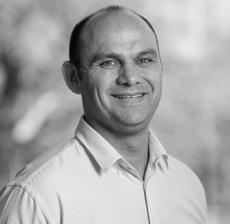

Craigmore Sustainables was established in 2009 to build progressive farming, horticulture and forestry businesses that produce quality food, fibre and environmental services. In doing so, Craigmore is also bringing together the necessary expertise, values, and capital to address the social, financial, and environmental issues at a community and global level.
Investing in natural assets and revitalising rural communities is crucial to improving social equity, reversing biodiversity loss, and addressing climate change.
Craigmore aims to demonstrate that, from our corner of the world, we can address these challenges and break down the barriers to delivering more sustainable futures. Aotearoa New Zealand is our canvas, because it is what we know, and it is has the potential to be a leader in sustainable food and fibre production.
There is no silver bullet. The key is to build a long-term land management business that builds its people and partners, supports their passion in making a difference and that holds each other accountable for our effectiveness. This goes beyond simply “buying a few farms”.
We can help re-invigorate rural communities by generating employment through responsible land-use change. This year we have planted 1.5m forestry trees, and almost 600,000 apple trees, kiwifruit vines, and grape vines, across land which was previously used for pastoral livestock farming.
By the end of 2022 Craigmore will have planted over ten million forestry trees on marginal farmland, generating employment from wood production and environmental services through GHG sequestration and protecting eroding soils. We can help individuals grow through personal development, training, and opportunity. This year, ten students participated in our first Tū Te Wana programme on our Springhill apple orchard in Hawke’s Bay. This gave them new skills and greater confidence to have a voice and to make a difference.
We also have an impact through changes in our pastoral farming businesses. Our work to date was recognised this year at the New Zealand Dairy Industry Awards, where Craigmore won the national 2022 Responsible Dairying Award. One of the judges captured the value we
to our 2022 Impact & Sustainability Report
Tēna
koutou kātoa. Tuatahi, ngā mihi
ki nga
mātau
kaitautoko. Tuarua, he
mihi
ki ngā kaimahi o Craigmore Sustainables mo ō
rātou
tautoko me pukengatanga o tēnei
mahi
whakahirahira. Craigmore Sustainables 02
aim to provide, saying "Craigmore are leading change and using different innovations on different farms to help create solutions that other farmers could then use”.

While New Zealand’s pasture-based dairy sector can produce among the lowest GHG-intensity dairy products in the world, it still has a massive challenge to reduce emissions. A range of technological pathway trials and research continued during 2022 – from soil carbon measures, testing methods for GHG efficiency of cows, afforestation, methane-busting feed additives, and effluent treatment.
Craigmore remains confident that we will become a climate leader by developing a proof-of concept net-zero dairy farm by 2035. This is a tough challenge, and one that we will achieve through internal commitment and support of our partners.
The Sustainability Linked Loan agreed with lenders to the Craigmore Farming Partnership is an example of how we can drive change by working more closely with our partners to achieve these outcomes.
This report, our second Impact and Sustainability Report, is another step in the right direction.
Impact & Sustainability Report 2022 03
Our Vision
Our vision is to be Kaitiaki –‘growing the best of Aotearoa, New Zealand.’
Kaitiaki is a term, which in te reo Māori (the indigenous language of Aotearoa New Zealand) means something similar to guardian.
This vision applies to everything we do through:
• Creating meaningful employment opportunities in under-invested communities
• Improving public access and connection to our environment
• Developing and protecting our people
• Actively addressing significant environmental challenges in our rural sectors; and

• Being an active fiduciary for our capital partners.
Our commitment to being Kaitiaki is also a commitment to uphold the expectations set out in Te Tiriti o Waitangi (The Treaty of Waitangi), a historical agreement between Māori and the British crown that governs the relationship between Māori and non-Māori.
Craigmore Sustainables 04
Our Strategy
We strive to be locally, nationally and globally recognised as one of the best managers of natural assets. To achieve this, our businesses must deliver longterm financial returns and address the industry challenges which are barriers to more sustainable futures for our communities.
These challenges include, among others:
• Creating pathways to Net Zero production of healthy sustainable food and fibre
• Reversing biodiversity loss
• Addressing social inequity through generating employment in rural communities.
To achieve these challenges, we need access to capital (Fund the Change), to hold ourselves to the highest standard of operational excellence (Be the Change), and to use our success to influence others (Enable others to be the Change)
Our Values
Understand tomorrow, act today
We ‘look beyond the fence’ and challenge today’s norms.
We believe in turning knowledge into action, sharing what we learn with others, and having the courage to act now for a better tomorrow.
The value is symbolised by the Koru (fern frond), which represents growth and regeneration.
Connect and empower
Empowerment is at the heart of Craigmore.
We believe that our people are best positioned to make decisions about operations, so we give them the space and support to do just that.
The value is symbolised by the Pikorua (double twist),which represents an enduring bond between people in spite of barriers of time and distance.
Deliver with integrity
Get the job done, right.
We deliver on expectations and are honest and transparent when we fall short. We lead by example and celebrate our achievements.
The value is symbolised by the Waharoa (gateway), which demonstrates our commitment to ‘go through the front gate’ and be straight up with others.
Impact & Sustainability Report 2022 05
Growing Greater Good
Craigmore Sustainables works with global capital partners to build and manage farms, orchard, and forestry businesses in Aotearoa New Zealand. We build these businesses to produce the food, fibre and environmental services sought around the globe, while leading the way in sustainable practices and benefiting our rural communities.
About Craigmore Sustainables
Founded in 2009, we are specialists at investing in and managing rural assets in which New Zealand enjoys a competitive advantage –permanent crop horticulture, dairy and forestry.
Our role is to raise capital, invest in opportunities, and to build skilled teams to manage our investments successfully and sustainably for the long-term.
Craigmore intends to exceed the social licence expectations of how land should be managed, to deliver operational excellence and profitability for our investors, to enhance environmental outcomes and to engage with and care for the communities in which we work every day.
We believe that well-managed capital, introduced by Craigmore and invested with a focus on sustainability, can be instrumental in the reinvigoration of many rural communities.
2009
Craigmore is founded by New Zealand family farmers, the Elworthy and Cox families
2010 Craigmore Forestry Limited – The Forestry Fund established with $26.4m
Craigmore Farming Partnership established
Craigmore Sustainability Principles introduced in 2012 and signed off in current form in 2013
2015 Craigmore Dairy II Partnership established
Craigmore signs the UN Principles for Responsible Investment
committed 2011 The
2012
2013
Our journey so far 2009–2022
2009 2010 2011 2012 2013 2015 Craigmore Sustainables 06
About our investment partnerships
New Zealand is recognised as a high-quality investment destination, with secure property rights, a robust rule of law and straightforward business structures. For investors in forestry and farmland, New Zealand enjoys an excellent climate with plentiful rainfall, and global low cost of production in several sectors and an exceptional pool of management talent. Craigmore manages a portfolio of high quality and productive land assets on behalf of our international capital partners. For these investors long-term sustainable oversight of natural real assets is an important element of their investment
criteria. Craigmore manages six New Zealand Investment Vehicles, which gives our Partners from around the world access to the three principal sectors in which New Zealand enjoys competitive advantage in global markets – the permanent crop horticulture, dairy and forestry sectors.
Craigmore Limited Partnerships
• Craigmore Farming Partnership
• Craigmore Dairy II Partnership
• Craigmore Permanent Crop Partnership
• Kauri Forestry Partnership
• Tōtara Forestry Partnership
• Craigmore Land Income Partnership
2016
The first specialist horticulture business established with the Craigmore Permanent Crop Partnership launch
2018
Forestry business expanded with launch of Kauri Forestry Partnership
2021 Craigmore’s inaugural Impact and Sustainability Report published
2022
First sustainability linked loan with ASB and Rabobank agreed, focused on tangible environmental, social and animal welfare benefits, if targets are met
2020
The third Craigmore forestry business, the Tōtara Forestry Partnership established with capital raising ongoing
2021 Permanent Crop Partnership re-opened to new capital
Impact & Sustainability Report 2022 07
2016 2018 2020 2021 2022
Craigmore Sustainables 08 Data includes assets under direct management. It does not include investments in businesses that Craigmore does not control. By the Numbers 2022 Our client capital is 57% institutional, 34% family offices, with the remainder private high net worth individuals/entities 57% Number of direct employees 253 Horticulture: Total sector assets 41% Farming: Total sector assets 40% Craigmore manages 6 limited partnerships 6 Forestry: Total sector assets 19%
Impact & Sustainability Report 2022 09 Craigmore manages 51 properties across New Zealand (not including minority interests) 51 Total assets (NZD) $940m Total hectares under direct management (including leases and forestry right areas) 24,166

10Craigmore Sustainables
*
Map of Craigmore Operations
Horticulture Forestry Dairy
(X) = Number of milking platforms
Minority interests
Total land area: 24,166ha
Kiwinorth Kiwifruit, 52ha
Wairere North Forestry, 481ha
Wairere South Forestry, 309ha Caves Forestry, 625ha Piroa Forestry, 239ha
Ngatieke Forestry, 708ha
Huakiwi Kiwifruit, 43ha
Mapua Kiwifruit, 18ha
Angus Kiwifruit, 4ha
Kirimini Kiwifruit, 40ha Wainui Kiwifruit, 12ha
Punawai Forestry, 389ha
Opare Forestry, 1,591ha
Wiroa Kiwifruit, 137ha Tahi Avocados, 77ha
Omana Forestry, 702ha Wheki Forestry, 693ha Manganui Forestry, 653ha
Battery Hill* Hops, 300ha
Blue Rock* Hops, 237ha
Waibury Investments* (5), Dairy, 1,539ha
North Canterbury Pod (4), Dairy, 952ha Glen Eyre (1), Dairy, 426ha Te Awa (1), Dairy, 234ha
Aoraki Pod (2), Dairy, 531ha
Tuakau Forestry, 550ha
Glentui Forestry, 850ha
Nuhiti Forestry, 70ha Maunga-O-Rangi Forestry, 1,275ha
Coxco Cropping leases, 980ha Glenpark Apples & Wine Grapes, 59ha
Pakowhai Forestry, 376ha
CFP Apples Apples, 113ha
Springhill Apples & Wine Grapes, 479ha
Lagoon Hill Station Forestry, 4,273ha
Haddon Farm* (1), Dairy, 93ha
Coastal Canterbury Pod (4), Dairy, 923ha
Classact Dairy* (1), Dairy, 218ha Southburn Pod (5), Dairy, 1,130ha
North Otago Taitonga Pod (4), Dairy, 835ha
North Otago Tuaraki Pod (1), Dairy, 211ha
Taieri Lake Sheep, Beef & Dairy Support, 2,721ha
Fortuna Group* (15), Dairy, 3,931ha
Argyll Group* (3), Dairy, 1,000ha
=
(including leases and forestry right areas) Impact & Sustainability Report 2022 11
Our Sectors Farming
Farming is Craigmore’s most mature business with 22 milking platforms and one dairy support grazing farm in the South Island, producing 88 million litres of milk annually. Milk from the Craigmore farms is processed by New Zealand based dairy companies for export around the world.2
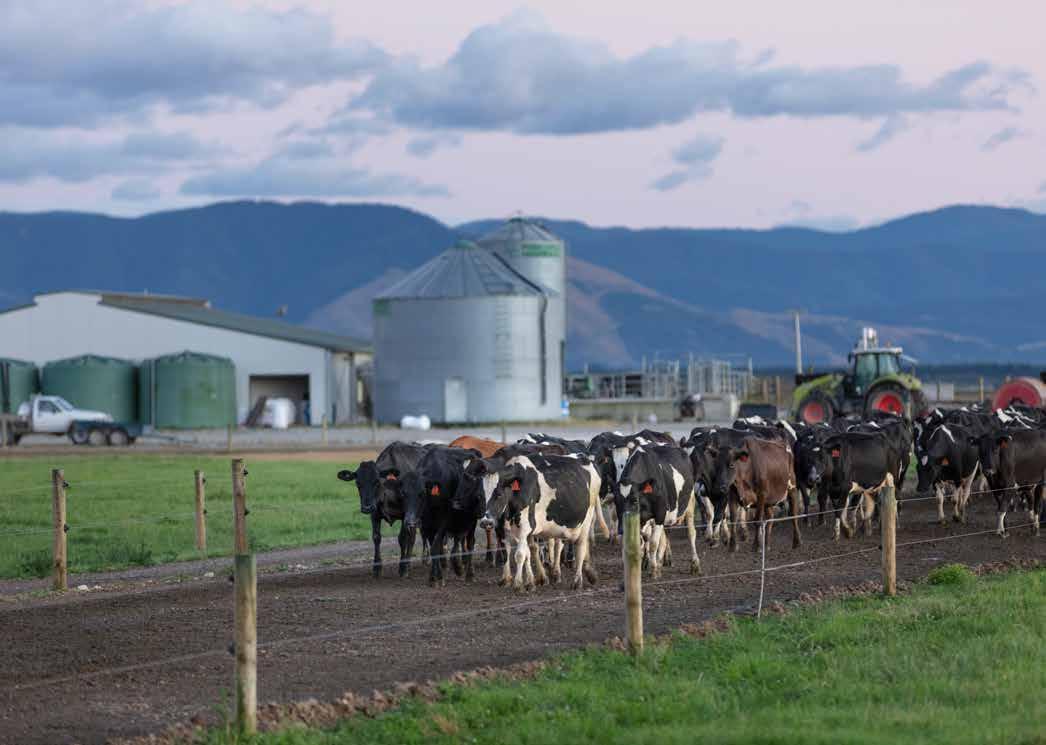
As well as majority-owned properties, Craigmore also has five minority interest investments in dairy farming businesses that comprise an additional 6,781ha producing 87 million litres of milk annually. Our farming businesses are run by teams and equity partners who share our values and have proven their ability to deliver.
2 New Zealand exported dairy products worth NZ$19,093m in the year to 30 June 2021. Source: MPI SOPI June 2022.
Data includes assets under direct management. It does not include investments in businesses that Craigmore does not control.
Craigmore Sustainables 12
88m Milk solids (fat and protein) Litres of milk Total number of cows: Annual milk production: 17, 460 7, 857,712kgms 8, 368 ha Total hectares including leased land: Owned: 7,963ha Leased: 64ha (McEwan) and 341ha (The Crossing) Total assets (NZD): $376 m Impact & Sustainability Report 2022 13
Our Sectors Horticulture
The Craigmore horticulture portfolio continues to grow, and we expect to maintain this trajectory over the next few years.
The Craigmore strategy is to build a diversified portfolio of assets in those sectors in which New Zealand enjoys a competitive advantage, and has strong export markets, such as kiwifruit, apples and grapes.3
The horticulture portfolio also includes Coxco – a business growing annual crops of squash
and pumpkins for export and a specialist horticulture labour solutions provider.
Craigmore investments generate new jobs and economic growth in under-developed rural communities. Capital investment in orchard and vineyard infrastructure transforms land previously used for pastoral farming and annual cropping to create significant growth in export receipts for New Zealand.
In 2022 we have completed development of one of
New Zealand’s biggest single-site combined orchard and vineyards, Springhill Horticulture. At maturity Springhill will produce 12,000 tonnes of apples and 2,100 tonnes of grapes every year.
We are also one of New Zealand’s top growers of organic gold kiwifruit accounting for 21% of annual fruit production.
3 New Zealand exported NZ$2,705m of kiwifruit, NZ$1,858m of wine and NZ$831m of apples and pears in the year to 30 June 2021. Source: MPI SOPI June 2022.

Craigmore Sustainables 14
Impact & Sustainability Report 2022 15 Total hectares including leased land 2,014ha Total assets (NZD) $388m 44% of Craigmore’s kiwifruit production is under organic management 44% Annual apple production 463t 21% of New Zealand’s organic gold kiwifruit is grown by Craigmore 21% Annual grape production 212t Annual squash processed 7,534 t Annual kiwifruit production 4,025 t Data includes assets under direct management. It does not include investments in businesses that Craigmore does not control. Tonnes of CO2 sequestration in FY21/22 3,000t
Our Sectors Forestry
Craigmore launched its first forestry business in 2010, focusing on the afforestation of marginal farmland. Since then, forestry has become an increasingly significant part of the Craigmore business.
Our strategy is to build a mixed portfolio of existing forests and land suitable for planting. We plant new forests where this is the most appropriate land use – usually less productive grazing land including properties that are steep, have
poor soil fertility or erosion issues. Newly planted forests provide a dual revenue stream – firstly from the sale of carbon credits and then from the sale of timber at harvest.
We have two dedicated forestry partnerships, the Kauri Forestry (which is managed in partnership with GlenSilva GmbH), and the Tōtara Forestry Partnership. The Kauri Forestry Partnership has built a mixed portfolio of forestland over the last three years
deploying $130.5m of capital. The Tōtara Forestry Partnership has deployed $32.6m purchasing the first three assets on which new forests will be planted. Craigmore continues to raise capital for the Tōtara partnerhsip.
* This includes recent acquisition area that has no production or reserves area factored in this report (mapping not completed as at print date).
Data includes assets under direct management. It does not include investments in businesses that Craigmore does not control.
New planting in FY 21/22 1,492ha Total hectares* 13,784ha Total forested area, net stocked area 5,351ha
Craigmore Sustainables 16

Impact & Sustainability Report 2022 17 Total assets (NZD) $ 176.5m 62,114 t Tonnes of CO₂e Sequestration in FY 21/22

Governance Craigmore Sustainables 18
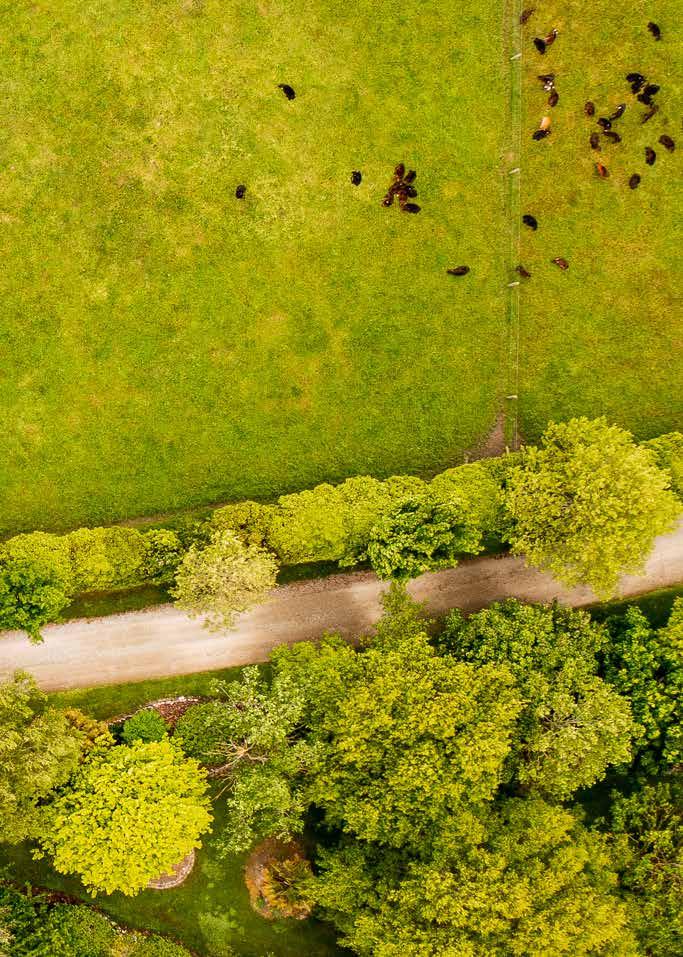
Governance Impact & Sustainability Report 2022 19
Governance Bodies
General Partner Boards
General Partner (GP) Board members are appointed by Craigmore Sustainables (the Investment Manager) to provide governance of the partnerships managed by Craigmore.
GP Board members support and challenge management decisions to ensure we are responsible in the management of our investors’ capital. This includes reviewing and agreeing strategy, approving budgets, measuring performance and ensuring that we have the resources to deliver on our strategy and wider commitments to stakeholders. These Boards are also responsible for overseeing the strategic execution of sustainability and ESG activities.
Board members sit across each of our partnerships in farming, horticulture, and forestry. Among other roles, GP boards also meet with senior management at least six times per year and attend specialist committees, as set out below.
Investment Committee
A decision-making committee of the Investment Manager, Craigmore Sustainables LLP. The investment committee makes investment and divestment decisions on behalf of each partnership, overseeing the allocation of capital. This includes the monitoring and management of key strategy and sector risks.
Assurance and Risk Committee
The Assurance and Risk Committee is charged with oversight of the Craigmore policies and processes. Members provide the assurance required on accounting and audit matters, external reporting, compliance, governance and related party transactions. This committee is chaired by an independent GP board member.
Health, Safety and Empowerment Committee
A combined committee of board members and senior managers to ensure that we have the systems and resources to look after our people. This committee is responsible for health and safety planning, delivery, monitoring and review, and ensuring that we have a strong culture that is aligned with our company values. This committee is chaired by the Chief Financial Officer.
Sector Performance Committees
Specialist sector Performance Committees provide advice and support for our General Managers and Business Managers. They facilitate and support operational excellence. These committees include two or three external experts with relevant technical and operational experience, sector-specific decision making and budgeting. The sector performance committees are farming, forestry, apples, kiwifruit and wine grapes. The relevant General Manager of each sector chairs these committees.
Craigmore Sustainables 20
Investment Committee Assurance and Risk Committee Farming Performance Committee Forestry Performance Committee Health, Safety and Empowerment Committee Horticulture Performance Committees Farming HorticultureForestry General Partner Boards Investment Manager Capital Partners Governance Structure Impact & Sustainability Report 2022 21
Governance Members
John Holland
John joined the Craigmore GP Board in February 2021. He is also a director of Craigmore Sustainables Group. John currently chairs the board of a national commercial construction company, Southbase Construction. Previous governance roles include six years on the board of leading New Zealand law firm Chapman Tripp, four years on the board of the New Zealand Securities Commission, seven years on the board of retailer Kathmandu and three years as an independent member of the University of Canterbury audit and risk committee.



Andrew Gibbs
Andrew Gibbs has been a member of the Craigmore GP Board since 2014. He currently chairs the Craigmore Assurance and Risk Committee. Andrew is a recently retired Partner of Deloitte NZ, where he worked as Leader of Primary Industry for over ten years. Andrew has comprehensive experience in governance, project management and advisory work in connection with feasibility studies, business change and planning and performance management across public and private sectors.
Che Charteris
Che joined Craigmore Sustainables in 2010. Prior to Craigmore, he worked in a range of roles within New Zealand’s central government including infrastructure funding, national park planning, telecommunication competition regulation and international agricultural trade co-operation. He currently also chairs the investment committee for a large Ahu Whenua trust which affiliates to his Iwi Ngāti Tahu –Ngāti Whaoa.
Craigmore Sustainables 22
Forbes Elworthy
Raised on Craigmore Station in the foothills of the Southern Alps, Forbes began his career as a shepherd. He went on to train in Agricultural Economics at Lincoln University, attended the University of Oxford as a Rhodes Scholar and gained an MBA from Harvard Business School. After working in the financial industry, Forbes returned to farming in 2005 to manage Craigmore Station. Forbes currently splits his time between New Zealand and the United Kingdom.
John Donkers
John joined the Craigmore Sustainables board in 2017. He has spent most of his career in the dairy industry, starting as a sharemilker on the West Coast. In 1994, John helped establish Camden Dairy Farms which owns and operates six properties in Central Canterbury, and in 1996, he established an advising consultancy, Dairy Farm Management Services. John’s governance roles include 15 years as a board member for Irrigation NZ Inc. and five years as a community representative for the Canterbury Water Management Strategy. He is also a director of Central Plains Water which he co-founded in 2003.



Mark Cox
Mark was raised on a sheep, beef and cropping farm before gaining a degree in dairy farm management at Massey University. After graduation, Mark worked at Fletcher Challenge and Wrightsons before joining agricultural food products company Cedenco Foods, where he spent six years as Fresh Crops Manager. When Cedenco was restructured in 1996 Mark purchased their fresh division assets and formed Coxco, which is currently owned and operated under Craigmore. Mark operates two dairy support farms in North Canterbury and holds various interests within the agriculture sector.
Impact & Sustainability Report 2022 23
Governance Members
Nick Tapp

Nick joined Craigmore in 2013 to lead the London-based investor relations team. Nick brings farming expertise with a global perspective, having grown up in the remote West Highlands of Scotland. Nick spent 25 years managing a large cereal, vegetable and potato farming business, and was chair of a grain storage and marketing company, both in Kent. Nick sits on the Board of Magyar Farming Company, operating a large-scale diversified farming business in Hungary. He served as a Director of the Oxford Farming Conference, and for six years sat on the Policy Committee of the Country Land and Business Association. He is a Nuffield Farming Scholar, and a Fellow of the Royal Agricultural Societies. Nick is a Trustee of The Royal Agricultural Society of England, and a Trustee of the Society Pension Fund.

Josef Nägel
Josef is a founding partner of GlenSilva GmbH which is part of the Westphalen Estate, Germany. The Estate has owned and managed forest and farmland in Central Europe for some centuries. During the last decade, it expanded into New Zealand and the US. Previously, he spent many years in the financial services industry, principally at Deutsche Bank AG in Germany, South America, India and Eastern Europe. Josef graduated with a diploma from the Bankakademie Munich as well as from New York University’s (NYU) Investment Banking Program and throughout his career has focused on risk management. He has relevant experience in the creation of investable real assets strategies for capital preservation as well as in developing land-based global carbon off-set strategies.
Craigmore Sustainables 24
Key boards and committees
Investment Committee
Assurance & Risk Committee
Health, Safety & Empowerment Committee
Gender M M M M M M M M
Ethnicity NZ/ European NZ/ European Māori NZ/ European NZ/ European NZ/ European British/ European German/ European Age 45–64 45–64 25–44 45–64 45–64 45–64 65+ 45–64
Governance committees also include Craigmore employees and specialist advisors.
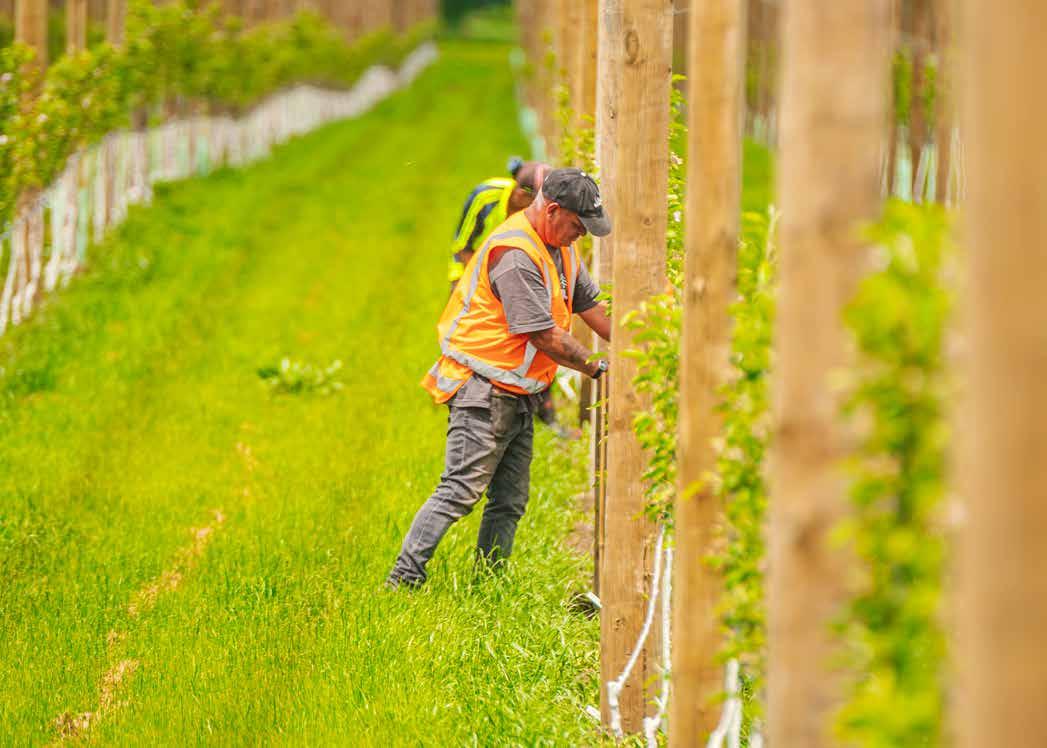 John Holland Andrew Gibbs Che Charteris Forbes Elworthy John Donkers Mark Cox Nick Tapp Josef Nägel
GP Board Observer
John Holland Andrew Gibbs Che Charteris Forbes Elworthy John Donkers Mark Cox Nick Tapp Josef Nägel
GP Board Observer
Impact & Sustainability Report 2022 25
Risk Management
‘Risk’ is the potential for harm or loss from vulnerabilities in our business being exploited by a threat. In addition to normal process and market threats which face any business, natural assets (such as farms, forests and orchards) face a range of climate and ecological threats which create specific short- and long-term risks.
Key threats and risks addressed and managed
• Ecological Ecological risks include climatic variation, such as rainfall, temperature, and wind, and pest and disease risk to plants, crops and animals. Craigmore addresses many of these ecological threats through careful site selection, geographical diversification, insurance, effective daily operations, and capital improvements for land and crop protection (such as hail nets, or irrigation).
• Operational
Poor operational management can increase costs of production, lower output, reduce workplace safety and cause environmental harm. Strong operational teams can make assets perform to their potential. Craigmore’s operational strategy focuses on the quality and support of local management teams both as individuals and teams.
• Regulatory
While New Zealand has a lower level of political risk for those investing in land compared to many countries, nothing is entirely risk-free. As an example, New Zealand manages the access of offshore investment capital to farmland through the Overseas Investment Office (OIO). Craigmore manages this situation by staying fully abreast of the regulations, acting with confidence within the rules and building a relationship of trust with the Office.
• Transactional Weak transactional processes may cause harm, such as the loss of private information, incorrect financial or other transactions, or noncompliance with contractual and constitutional commitments. Craigmore manages these threats through separation of duties and a focus on secure processes.
• Market Global and local markets materially affect the availability and prices for inputs and for farm gate price of products. Disruptions to export logistics during the COVID-19 pandemic, volatility in global commodity prices and availability of labour all affect the operating businesses. Price-related risks for products grown on Craigmore farms are managed by a relentless focus on cost of production, so that the inevitable downturns in global commodity prices can be contained with minimal downside damage.
While grouping risks is helpful for management, risks do not exist in isolation and often affect each other. For example, climatic changes may increase the risk of specific diseases or pests, which could result in reduced market access into countries that wish to protect themselves from those risks.
Craigmore Sustainables 26
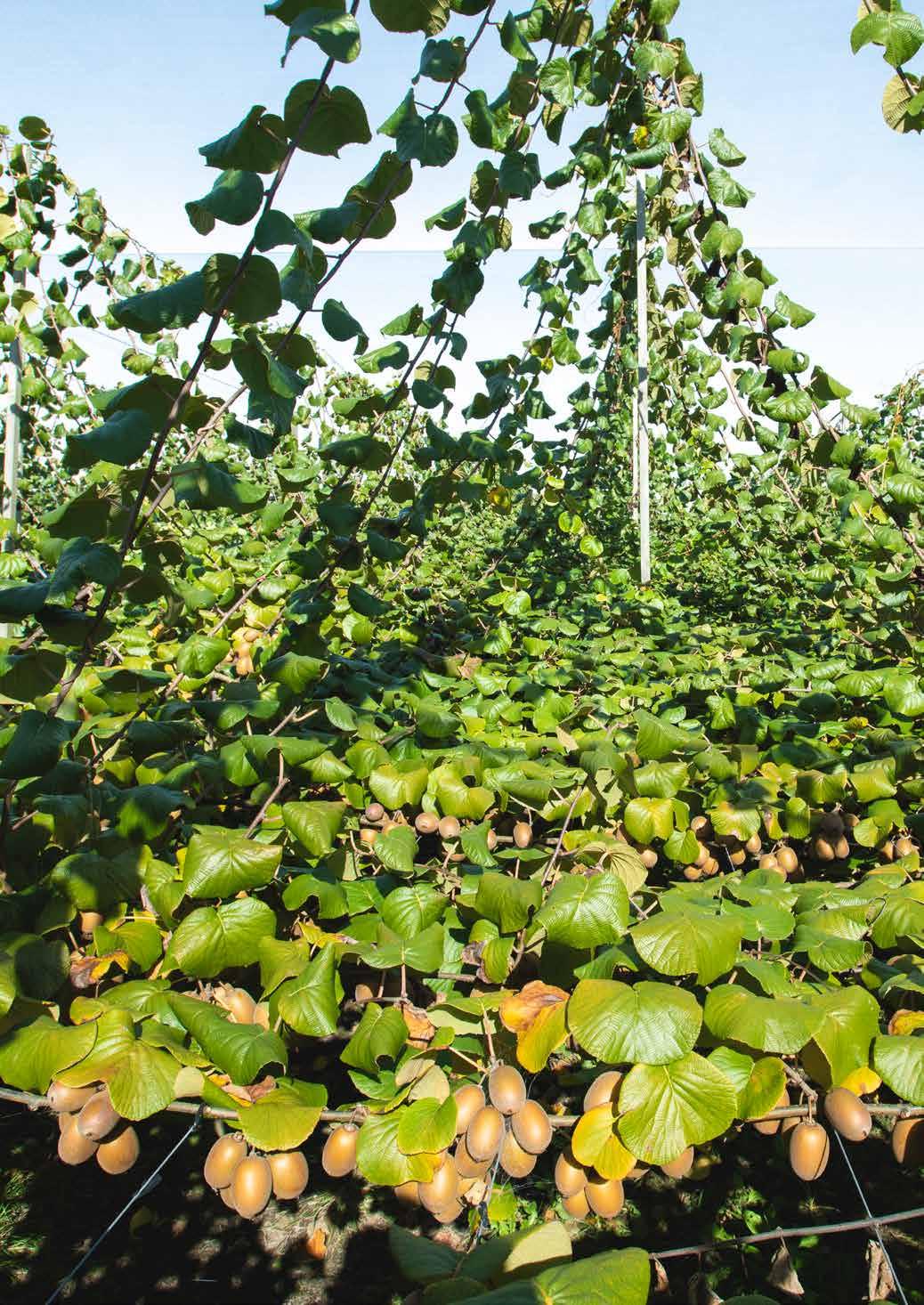
Impact & Sustainability Report 2022 27
Allocation of Risk Management
Risk management allocation
Oversight and management of different risks is split between five separate internal entities – every risk must have a ‘home’. Outlined below are the entities responsible for each type of risk.
• Investment Manager/GP Board: Strategic, sustainability (including climate risk) and reputation management
• Assurance and Risk Committee: Process, transactional and financial risks, cyber-crime, hedging, related party transactions, and regulatory compliance
• Health, Safety and Empowerment Committee: Health and safety, people and culture
• Investment Committee: Portfolio mix and acquisitions, which include considerations around climate (short-and long-term), soil quality, diversification, irrigation and other factors
• Performance Committees: Operational, industry and market risks.
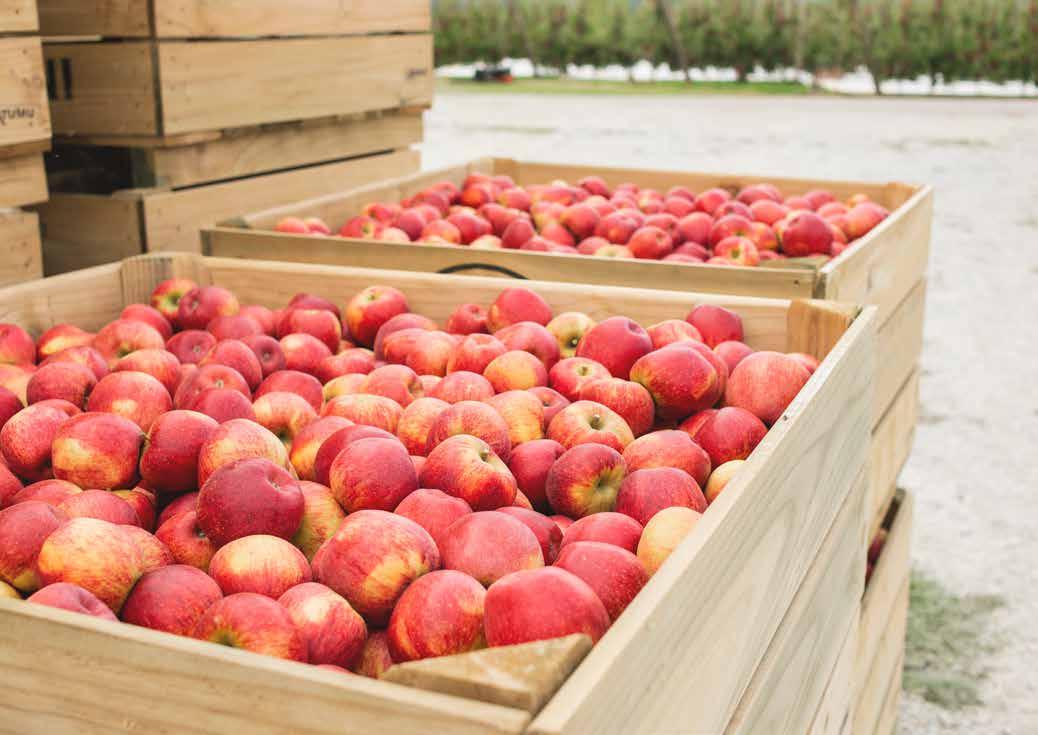
Craigmore Sustainables 28
Assessing Craigmore’s Climate-Related Risks
Climate-related risks are of growing concern globally, and the story in New Zealand is no different
The Craigmore portfolios were built with an awareness of the threats posed by climate change. Even so, Craigmore is undertaking a review of the potential impact of climate change on our operations, over different timeframes and a range of warming scenarios, in line with the recommendations by the Task Force for Climate-Related Financial Disclosure (TCFD). We now expect to release this report in 2023.
Craigmore completed a Climate Risk Maturity Assessment in 2020 with KPMG and was graded "Limited". This assessment was completed again in 2022 and the business achieved an "Intermediate" Grade, see Figure 1. KPMG commented on the progress in the Governance (Board), Risk Management, and Metrics and Targets domains.
Figure 1 Craigmore Climate Risk Maturity Assessment 2022
Impact & Sustainability Report 2022 29
Principles of Responsible Investment & UN Sustainable Development Goals

Responsible investment integrates environmental, social, and governance (ESG) factors into investment analysis and decision making. It recognises that these factors can have an impact on the financial value of an investment and the impact of that investment on the world.
UN PRI
Craigmore has been a signatory to the United Nations Principles of Responsible Investment (UN PRI) since 2012.
After obtaining a ‘B’ rating in 2020, Craigmore committed to a three-year plan to reach an ‘A’ rating in the 2023 reporting year. The release of the reporting
outputs from the 2021 year was delayed by UN PRI due to issues as they revised the reporting and scoring system. The new ratings were released in September 2022. Craigmore received three stars out of five. We will now complete another evaluation of the steps required to reach a five-star rating under the new system.
United Nations Sustainable Development Goals
The 2030 Agenda for Sustainable Development, adopted by all United Nations Member States in 2015, provides a shared blueprint for peace and prosperity for people and the planet, now and into the future. The blueprint includes 17 Sustainable Development Goals (SDGs). Craigmore is positioned to deliver significant progress on goals 8, 12, 13, and 15.
Decent work and economic growth Responsible consumption and production

Promote sustained, inclusive and sustainable economic growth, full and productive employment and decent work for all.
Farming, horticulture and forestry contribute significantly to the New Zealand economy, with profitability in these sectors creating employment opportunities often in underinvested rural communities.
Craigmore brings capital to New Zealand to create economic growth, jobs and increased export earnings. We focus on building equity and safety in our workplaces while addressing barriers to employment through local training programmes and government partnerships.
Ensure sustainable consumption and production patterns.
Craigmore has a clear commitment to sustainability throughout our strategy and aims to increase productivity while using natural resources efficiently and reducing negative impacts. We advocate for sustainable practices in our industries and plan to lead the market in establishing a proof-of-concept net-zero dairy farm.
Where possible we are transitioning to organic production systems and are one of New Zealand’s largest grower of organic gold kiwifruit. We encourage our people to innovate and align with third party certification of production systems including Biogro for organic certification, Lead with Pride for dairy supply to Synlait Milk and Global GAP for export of fruit.
Craigmore Sustainables 30
Climate action
Take urgent action to combat climate change and its impacts.

Farming, horticulture and forestry play an important role in contributing to and mitigating climate change. Craigmore is committed to measuring and reducing greenhouse gas emissions, planting new forests to sequester atmospheric CO2, planting native species on our properties, undertaking responsible land use change and demonstrating a viable pathway to net-zero dairy farming.
Life on land
Protect, restore and promote sustainable use of terrestrial ecosystems, sustainably manage forests, combat desertification, and halt and reverse land degradation and halt biodiversity loss.

Craigmore is establishing new, sustainably managed, FSC certified forests and planting erodible land. Areas of less productive land in orchards and vineyards are planted with native forest species creating habitat for plants and wildlife, with native forests protected by law.
We are following sustainable operating practices and partner with industry and community groups to improve biodiversity and promote healthy ecosystems. We also encourage innovation and practices that protect our waterways, with a commitment to upholding the principles of Te Tiriti o Waitangi (The Treaty of Waitangi).

31Impact & Sustainability Report 2022

Craigmore Sustainables 32 Environment

Impact & Sustainability Report 2022 33 Environment
Greenhouse Gases
Craigmore’s ambition is to be a leader in land-based reduction of Greenhouse Gases (GHG) through:
• Changing land use; for example, converting less productive hill country farms into forests, thereby reducing emissions by reducing livestock numbers and sequestering atmospheric carbon through tree growth; and
• Changing operational practices on farms, orchards and forests to reduce GHG emission intensity; for example, improving the conversion of feed to milk through better herd genetics and operational decisions to reduce GHG emissions per litre of milk produced.
Our specific climate goals are to achieve:
• 50% reduction in net GHG emissions by 2030 compared to emissions immediately prior to Craigmore management control
• An independently verified net-zero emissions dairy farm by 2035, with minimal offsetting, established in partnership or collaboration with other like-minded entities
• 35% reduction in GHG emission intensity for milk production across our farms by 2035
• Net-zero GHG emissions from the Craigmoremanaged portfolio of assets by 20504
• Net-zero GHG emissions from the Craigmoremanaged portfolio of assets by 2030, including all sources and sinks of GHG5
Comparison to New Zealand GHG targets
Under domestic legislation (Zero Carbon Amendment Act 2019), the government has set out a national commitment to the following GHG reduction targets:
• Net emissions of all GHG (excluding biogenic methane) reduced to zero by 2050
• Methane reduction of 10% by 2030, and a provisional target reduction of 24-47% by 2050.
Craigmore commitments go well beyond these national targets.
Methane: short-lived gases are different to long-lived gases
Globally, governments are increasingly differentiating between long-lived GHG such as carbon dioxide which can last hundreds of years in the atmosphere, and short-lived gases such as methane which has an average atmospheric lifetime of 12 years.
While all gases contributing to climate change must be reduced, the impact of reductions is different for long-lived gases (e.g. CO2, at 100 to 1,000 years) compared to short-lived gases (e.g. methane, at c. 12 years). Figure 2 highlights the methane cycle in ruminant pasture-based farming systems. Reducing CO2 emissions slows the increase in atmospheric CO2 and the associated warming effect (but still increases warming), whereas reducing annual methane emissions reduces total atmospheric methane levels and has a cooling effect on climate. Theoretically, maintaining methane emissions at the same annual level does not increase atmospheric levels of GHG.
This is relevant to New Zealand because methane is the primary GHG emission from dairy cows, and New Zealand biogenic methane emissions have only increased 8% since 1990 (compared to a 38% increase for CO2 emissions). The comparatively small increase in biogenic methane is due to a fall in sheep numbers, down by 46% (31m) and a smaller increase in cattle numbers by 26% (2m, often replacing sheep).
4 This target excludes any carbon credits (New Zealand Units or NZUs) which have been received by the forestry sector and sold to third-party emitters. It also excludes any indirect NZUs that have been purchased by Craigmore properties through fuel and electricity. Suppliers of these products are required to purchase credits to offset their emissions. This cost then flows through to the consumer (ie Craigmore farms, orchards or forests)
5 This target includes all biological sources and sinks of GHG including those sold by the forestry sector and those indirectly offset by the supplier (eg fuel and electricity)
Craigmore Sustainables 34
Methane cycle in a ruminant
system
Photosynthesis
Carbon
(C02)
With acknowledgment to the CLEAR Centre, UC Davis – Why
warms the
from
from
than
Carbon (C) is
Hydroxyl Oxidation
Methane (CH4) is converted into carbon dioxide (C02) after 12 years through oxidation
Cow manure and belches release carbon (C) as methane (CH4)
Impact & Sustainability Report 2022 35 Figure 2
pasture-based farming
C Carbon
stored as carbohydrates in plants and consumed by ruminants
dioxide
is captured by plants as part of photosynthesis
C02 Carbon dioxide C02 Carbon dioxide CH4 Methane
methane
cattle
climate differently
CO2
fossil fuels, 2020
out below
use
In addition to converting
orchards,
actively identify
feed supplements,
sequestration in soils and
reviewed articles also suggest that
horticulture operations carbon neutral
sequestration of
in soil.
Craigmore Sustainables 36 Our pathway to achieving our climate goals Measurement The complexity of biological processes that drive GHG changes in our businesses and the absence of widely accepted tools and methodology make accurate measurement of our GHG emissions reductions more difficult. Accordingly, we will sometimes rely on averaging, and general estimates from published research and note that some areas, such as soil carbon and embedded carbon in wooden products, important sources of and potential sinks for atmospheric CO2, have been excluded to date. For now, our focus is on estimating scope 1 and scope 2 cradle to property gate * Fat and Protein Corrected Milk ** per hectare kgCO2e/kgFPCM* kgCO2e/ha** 2018-19 0.71 15,610 2019-20 0.71 16,013 2020-21 0.69 15,939 2021-22 0.70 15,895 Net Intensity of Craigmore Managed Dairy Farms UoM Craigmore Total Breakdown by Sector Farming Horticulture Forestry Net GHG emissions across Craigmore managed businesses GHG Emissions tCO2e 111,858 103,353* 8,000 305 GHG Removals tCO2e -65,795 -681 -3,000 -62,114 Net GHG Emissions tCO2e 46,063 102,872 5,000 -61,809 Adjustment for any emissions trading units sold or purchased Units Sold tCO2e 0 0 0 0 Units Purchased Indirectly tCO2e -2,738 -1,522 -1,200 -16 Adjusted Net GHG Emissions tCO2e 43,325 101,350 3,800 -61,825 Adjustment for separation of long-lived gases and biogenic methane Biogenic Methane tCO2e 57,639 57,639 0 0 Net GHG Emissions Excl. Methane tCO2e -11,575 45,234 5,000 -61,809 Craigmore's
overall GHG emissions and
removals
across the three sectors
emissions on properties. Accuracy and scope of measurement will evolve over time. Execution The figures set
capture the results of Craigmore’s two-pronged strategy: land
change and operational change.
farmland to forest and
we
opportunities for innovation and experimentation to reduce methane emissions through
and for increasing carbon
trees on farm. Peer
we can make our
through increased
carbon
Overall emissions
The tables on the left provide a summary of our estimate of the net impact on GHG emissions for the 2021-22 year by sector. The emissions figures set out three views of Craigmore estimates of GHG emissions:
• Net GHG emissions across businesses for which Craigmore has management responsibility
• Adjustment for any emissions trading units bought and sold by Craigmore businesses, directly and indirectly
• Adjustment for the distinction between short-lived and long-lived gases.
Land use change
The diagram in Figure 3 sets out the impact Craigmore has had on reducing GHG emissions through facilitating land use change. Craigmore has converted the land use on a range of properties to either more GHG-efficient production systems (horticulture) or to net positive production systems (forestry). Based on net cradle to gate estimates, Craigmore investment can be estimated to reduce the annual emissions of the previous land use by 100,000 tonnes of CO2e, as farms have been transformed into orchards and forests.
Reducing emissions intensity
Given the importance of animal protein as a source of human nutrition, a critical challenge in addressing climate change is to invest in production systems that have lower GHG emissions intensity. Milk is one of the most GHG-efficient forms of producing animal protein. Furthermore, the New Zealand grass-based milk production system is one of the least emission intensive commercial dairy systems in the world.
Craigmore net emission intensity measurement for 2021/22 is 0.70kgCO2e per kg Fat and Protein Corrected Milk (FPCM), which is 10% below the New Zealand average and 44% below the US average (as estimated by Mazzetto, Falconer & Ledgard, 2021). This slight increase from 0.69 in 2020/21 was due to a decrease in milk production for the 2021/22 season.
* The total GHG emissions include emissions from Taieri Lake, support blocks and stock grazing off farm (including replacements and wintered cows).
Figure 3
Impact of land use change decisions made by Craigmore
to
1,200,000
Impact & Sustainability Report 2022 37
Prior
Craigmore purchase 2022 188,800 stock units
fruit trees, vines 240,000 stock units 300,000 fruit trees, vines 9,192,000 timber trees 1,500,000 timber trees

Craigmore Sustainables 38
Kiwifruit orchard in zero carbon trial
Craigmore’s Wiroa kiwifruit orchard in Northland, has been selected to participate in a carbon neutral trial sponsored by Zespri. The trial, which begun in 2022, will be conducted two blocks – block J1 being the trial and block J2 being the control. Figure 4 details the proportion of total orchard emissions.
Stage one of the trial runs through the 2022-23 season measuring GHG emissions. Stage two in the 2023-24 season will measure GHG reductions and then stage three we will measure any further reductions. The aim is to follow fruit through to market and promote the crop as ‘carbon neutral fruit’ in the later stages of the trial.
The main sources of GHG emissions at Wiroa are from fuel and fertiliser. Fertilisers such as nitrogen are a large contributor to emissions, which can be reduced by sourcing fertilisers manufactured using lower emissions methods, and by using less fertiliser. Emissions from fuel can be reduced by using less fuel.
The growing operations on the orchard are not a large contributor (~13%) so the trial will look at reducing emissions after harvest and along the supply-chain.
Impact & Sustainability Report 2022 39
Case Study
Figure 4 Proportion of total orchard omissions prior to 2022 season Agrichemicals 4% Capital growing structures 8% Soil emissions prunings/leaves 4% Soil emissions compost 10% Soil emissions fertilisers 14% Fuel 28% Electricity 2% Fertiliser & compost manufacture 30% Source: Zespri
Soil
Soil provides sustenance for plants, human nutrition, water filtration and helps to regulate the Earth’s climate. Erosion and reduced biological health reduce the soil’s ability to sustainably generate productive crops and, in some instances, farmland has been abandoned due to erosion and a loss of fertility.
Craigmore already undertakes a range of careful soil protection measures, such as erosion protection plantings, no tillage re-grassing, and balanced fertiliser plans that include both synthetic and biological products.
Our next focus is on deploying tools that can systematically measure soil health in a more holistic sense that captures both nutrient availability, soil carbon and biological health.
The most important action is to ensure land use is appropriate for the site, including mapping out areas with high erosion risk and planting them in erosion-reducing vegetation, such as trees and native shrubs.
National Environmental Standard for Plantation Forestry
There are four classes of erosion risk under ESC: low; moderate; high; and very high. Land classified as high or very high is highly susceptible to erosion. Craigmore is taking unstable land and stabilising it by planting into trees. The chart in Figure 5 shows the proportion of Craigmore’s forestry area planted by ESC class.
The Land Use Capability (LUC) classification shows land capability and versatility for various uses. All New Zealand’s rural land is classified into eight cases, based on its physical attributes, such as climate, vegetation, soil, slope and erodibility.
• Classes 1-4 are generally suitable for a wide range of land uses, such as arable or pastoral farming
• Classes 5-7 have serious limitations for arable production but can be suitable for pasture or forestry
• Class 8 is generally unsuitable for land uses other than being left aside for conservation.
Figure 6 shows the forestry areas planted by Craigmore using LUC classification, showing forestry land use is appropriate for the site. Any LUC 4 land in Craigmore’s portfolio is land that is either being prepared for sale or mixed within the steeper class of land and unable to be subdivided and onsold for a more productive use.
"Highly
Craigmore Sustainables 40
erodible land" is land that is classified as having high or very high risk of erosion under the Erosion Susceptibility Classification (ESC) mapping layer developed by the Ministry for Primary Industries. Protected Erodible Land % of highly erodible land protected with plantings Farming 100% (including land earmarked to be sold or planted) Horticulture 100% Forestry 100% * including land earmarked to be sold or planted.
Study
Measuring soil carbon
Craigmore farms have undertaken soil carbon testing this year to measure overall soil health and soil carbon stocks for GHG emissions.
The measure of soil health focuses on soil organic matter and the associated carbon and nitrogen present within the soil profile, to provide a measure of the overall biological health and soil quality. Attributes such as soil structure and physical resilience, water holding capacity, soil temperature, soil pH, microbial activity, nutrient storage and cycling are all effected by the soil carbon and nitrogen content.
Regular monitoring of soil organic matter is important to ensure carbon and nitrogen levels within the soil profile are improving, or at the very least being sustained, under the current farm system for the long term.
The measure of soil carbon stocks for GHG emissions focuses on the actual amount of carbon stored in the soils. Soils in New Zealand typically contain more than twice as much carbon than in the atmosphere. While our soil carbon levels are regarded as being high by international standards, it is important that we maintain our soil carbon stocks to prevent changes to atmospheric CO2 concentrations and the subsequent impacts this will have on climate change.
Ongoing monitoring of soil carbon stocks is essential to ensure soil carbon levels are not declining. The process of monitoring soil carbon changes over time is relatively new, and we are still learning the best ways to do this. As soil carbon is slow to change, we will reassess the farms every three years.
Impact & Sustainability Report 2022 41 Figure 5 Proportion of forestry planted by ESC class High Moderate Low Very High Figure 6 Forestry areas planted using LUC classification 12345678 3000 2500 2000 1500 1000 500 0 Classes Area Planted
Case

42
Progress with visual soil assessments
Sustainable productivity depends on healthy soil. While nutrient testing is essential to understand soil health, visual soil assessments are also required to tell the full story.
This season, visual soil assessments (VSA) were carried out across all Craigmore dairy farms. The VSA looks at six physical parameters of a site including, soil structure and consistency, soil porosity, soil colour, mottling, earthworms and surface relief. The assessment rates each parameter against standardised photos of good, average and below average examples for the parameter. Each parameter has a weighting of importance, and it is the sum of the weighted averages across the six parameters that give the VSA score.
Samples were compared with unaltered samples from under fence lines – samples act as a benchmark for what the soil would look like if they were unaltered by farm practices such as compacted by stock or mechanically interfered with through cultivation. As demonstrated by the chart in Figure 7, scores greater than 20 indicate the soil is in good condition, scores between 10 and 20 indicate moderate condition and scores less than 10 indicate the soil is in poor condition.
The average score across the Craigmore farms for the 2021/22 season was 18. This shows that while on average the soils are in relatively good condition, there is room for improvement in managing our soils across the group. The aim is to increase the average score of the group over time.
An additional benefit of undertaking the VSA process is that all farms have been accurately soil mapped. The soil mapping gives information on the strengths and weaknesses of each soil type which gives us the ability to use this information to improve both soil management and VSA scores over time.

Case Study Impact & Sustainability Report 2022 43 Figure 7 Measure of soil quality 20+ Good condition 10 20 Moderate condition 18 Craigmore farms average score 2021/22 <10 Poor condition
WaterThe availability, quality and biological health of freshwater is a global issue which is growing in importance as the climate changes, and demand for high quality food and fibre increases.
The focus in New Zealand, with high and consistent rainfall and relatively small landmass, is on local water quality for human use (consumption and recreation) and the biological health of waterways, rather than on absolute water availability. Improvements can often be made to reduce both the sedimentation of waterways caused by erosion and nutrient loss to aquifers, streams and rivers.
Craigmore is committed to developing innovative ways to improve water use efficiency and manage local impacts on water quality. We use a number of metrics to analyse our performance with regards to water, the most quantitative of these is nitrogen losses to below the root zone.
Nitrogen Loss
The data below shows that nitrogen loss on Craigmore-managed dairy farms decreased by 6% in the 2022 season compared to the average nitrogen loss from the 2021 season.
Forestry
Farming (Dairy) 31.6 29.7
Farming (Sheep & Beef) 2 2 Horticulture (Permanent Crop) 7.3 7.3
We have trialled Visual Stream Assessments across our farm waterways this season. This methodology measures the ecosystem health in the streams on our properties. When undertaking the assessments, we found that our farms scored an average of 216. Scores above 250 indicate that the stream is very healthy, scores between 120 and 250 indicate that the stream has a lot of potential and is at an intermediate level of health. Scores below 120 show that the stream has been adversely affected by activities on or up stream from the farm.
About the data
Nitrogen loss on our forestry properties has not been reported due to the negligible nitrogen loss expected. Farming numbers are property specific and estimated using Overseer – a model used by regulators across New Zealand for estimating nitrogen loss. Horticulture numbers are average numbers based on an independent report – AgFirst: The value of nitrogen fertiliser to the New Zealand Economy report, 2019. Horticulture data excludes Coxco, which is a cropping business and very difficult to model at this stage.
Nitrogen Loss kgN/ha 2021 Season 2022 Season
Craigmore Sustainables 44
Case Study
Water monitoring at Lagoon Hill
The Ōterei River flows north to south in southern Wairarapa through farmland, pine plantation and regenerating forest. Lagoon Hill is a Craigmore-managed property that covers approximately 1,400ha of mature Pinus radiata forest and 1,200ha of areas being converted from farmland to forestry, including 5km along the Ōterei River.
Riparian margins of the river will be planted with native species and a monitoring programme has been established by Farman Turkington Forestry Ltd and Boffa Miskell Limited to ascertain whether the planting in the riparian setback has had a positive effect on stream health and the riparian ecosystem. Testing includes water sampling twice-yearly looking at nitrogen and phosphorus levels, and suspended sediment, together with measures of MCI1, eDNA2, photo points (drone and ground) and bird counts.
Our objective is to collect evidence of return of native fish species to the upper reaches of the river, and materially improved birdlife, as a result of native plantings shading the stream and enhancing natural habitats.
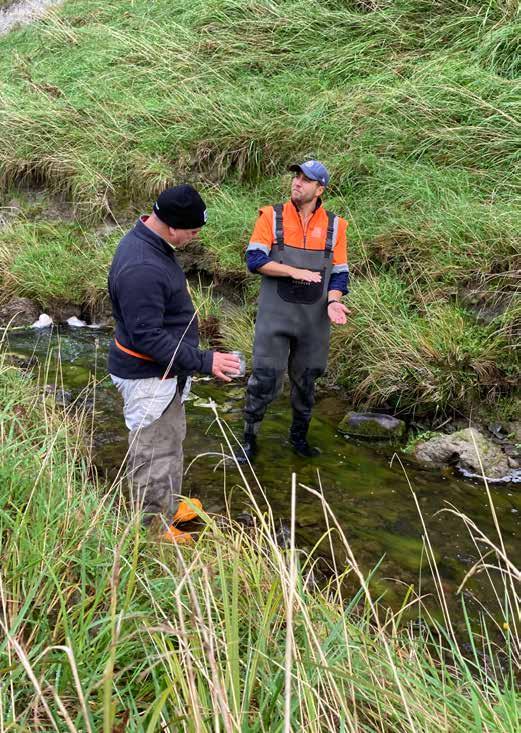
1 Macroinvertebrate Community Index: Freshwater macroinvertebrates are commonly used as an indicator for freshwater stream health, and to detect any changes in community composition.
2 eDNA: As an alternative to fishing, eDNA monitoring can be utilised to gain an understanding of the existing fish community. eDNA sampling provides a presence/absence of fish (to the species level) of the section of stream/river upstream of the sampling point. In the case of this project, a useful comparison to draw is the potential difference in fish community between the newly planted (currently unforested) and forested stretches of river.
Impact & Sustainability Report 2022 45
Case Study
Winter grazing trials at Taieri Lake
New Zealand’s temperate climate means animals can graze outside year-round. One of the challenges that the dairy industry faces is that over the winter soil temperatures drop, reducing pasture growth. This means feed needs to be conserved through the growing season to be fed to livestock in the winter.

One cost effective and efficient way of doing this is by growing fodder crops such as kale and fodder beet. While these crops grow well, with high yield and good return on cost, poor growing and grazing practices can have detrimental impacts to the environment and on animal welfare. As a result, Craigmore has been looking at alternative solutions to manage cows through the winter.
Two slightly different methods of wintering cows have been trialled at Taieri Lake. The aim of both is to reduce the time our animals spend grazing on crops in paddock and thus reduce the amount of damage they may cause to the soil structure and to reduce any nutrient run-off.
The first trial is a self-feeding silage stack. Silage is a term for grass cut and preserved under cover for consumption over winter. To allow the cows to self-feed on the stack of grass the cover is systematically rolled back, and temporary fence used to control access cows have to feed. Cows are rotated between grazing crops in paddock and feeding from the stack.
The other system being trialled utilises deferred standing pasture combined with round bails of bailage. Paddocks are locked up in late summer to conserve grass grown over autumn for cows to graze through winter. Bailage is grass cut earlier in the season and conserved as round bails to feed over the winter.
We have recently engaged with a Lincoln University PhD student who will work with Craigmore to test and trial different pasture species mixes aiming for higher yielding pasture crops that will maintain quality and growth through colder periods. They will also help us to quantify the costs and benefits of running alternative wintering systems.
46Craigmore Sustainables

Impact & Sustainability Report
Biodiversity & Ecosystems
In addition to being of intrinsic value, native biodiversity contributes to ecosystem services for agriculture and horticulture, as well as the recreational and cultural wealth of Aotearoa New Zealand and te ao Māori.
Craigmore is committed to protecting and enhancing biodiversity through minimising practices which harm ecosystems; and enhancing and protecting native areas. Our biodiversity policies include:
• Protecting existing native vegetation and waterways from livestock grazing
• Protecting native plants and animals through control of mammalian pests6
• Avoiding native deforestation in our developments
• Native planting on sensitive land
• Implementing low-spray management systems on orchards such as integrated pest management and organics.
Enhancing biodiversity is also an important way that Craigmore can support long-term Māori customary use of the land. This could include supporting populations of tuna (eels) and kōura (freshwater crayfish) and other treasured natural resources (taonga).
About the data
‘Under protection’ refers to an area of land managed for environmental protection and conservation. It includes land subject to either management or legal land use
for the purposes of maintaining biological diversity and natural resources.
of our farms have small areas of native plantings. We are developing a method to measure them and keep track of future planting for more accurate reporting.
6 Integrated pest management is an effective and environmentally sensitive approach to pest management using information on the life cycles of pests and their behaviour. This information, combined with pest control methods, manages pests while minimising negative impacts on the environment, other animals, crops, property and people.
Hectares Forestry 1,109 Farming 100 Horticulture 62 Native vegetation under protection on Craigmore properties Hectares Forestry 64 Farming 103 Horticulture 25 Native plantings by Craigmore since inception
restrictions
Many
Craigmore Sustainables 48
Dairy farm biodiversity plans
Craigmore has developed management plans for five Significant Natural Areas (SNAs) across the farming portfolio to enhance and protect each site.
Indigenous vegetation will be restored along Countess Stream at Caithness, North Canterbury with the objective of enhancing aquatic ecology and biodiversity. We have already planted alongside the top part of the stream and planting of the lower half will start in spring 2022.

At Riverend in North Canterbury a wet area of pasture with significant rush land was selected to restore what would have once been a kahikatea (a native New Zealand tree) flood plain forest and swamp wetland. This site has been fenced and planting has commenced.
Glen Eyre has one of the last remaining kānuka stands in the Waimakariri district. Craigmore will facilitate regeneration of kanuka, and potentially other woody native species present to enhance biodiversity value of this remnant area, including creating habitat for dry land lizard species.
Native mudfish have been identified in waterways at our Somerset property near Timaru. Riparian margins will be established and maintained to provide a vegetation buffer between the gallery used to extract water for the farm and habitat for the population.
Taieri Lake has one of the last remnants of native broadleaf forests in the area. A management plan has been developed to maintain and restore native habitat across the full altitude range of this site, including controlling invasive animal pests and woody weeds.
Impact & Sustainability Report 2022 49
Case Study
Update on organic conversions: growing profit and environmental outcomes together
Craigmore actively considers organic production opportunities when assessing new investments. We have trialled organic production in dairy and kiwifruit. While the absence of a reliable off-taker has been a barrier to organic dairy production, we are quickly becoming one of the largest organic gold kiwifruit growers in New Zealand. When fully developed and certified, approximately 25% of Craigmore’s kiwifruit portfolio by area will be organically managed. An additional kiwifruit orchard had its first fully certified organic harvest in 2022. A total of 43ha of kiwifruit has completed the three-year organic conversion process and achieves an additional c. 20% price premium per tray of fruit exported.
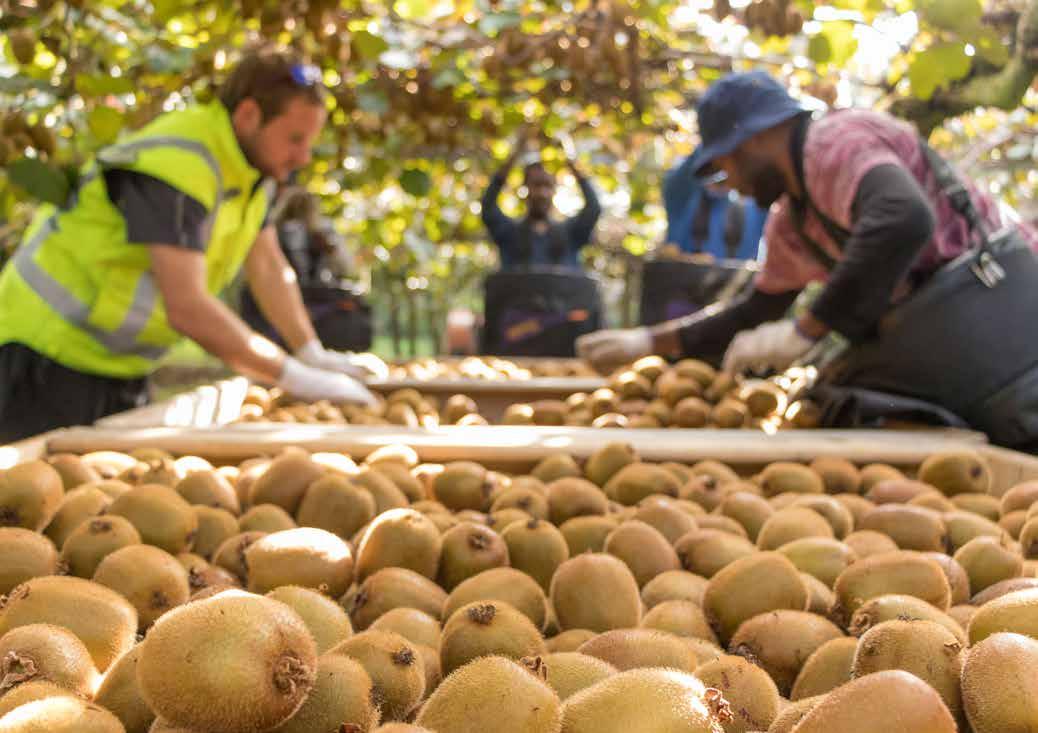
Hi-Cane replacement trials at Wiroa
At Wiroa Orchard, Craigmore has an agreement with Zespri to trial replacements for Hi-Cane dormancy breaker. Hi-Cane is a spray traditionally been used in kiwifruit, especially in areas of low winter chill, to increase budburst and make the buds more floral. This is particularly important in Northland with fewer chilling hours. The benefit of using the product is a more even bud break which produces more evenly sized fruit.
The trial will use a small plot replicated with controls with Zespri looking at existing and new products as alternatives to Hi-Cane. Zespri aim to understand different timing and efficacy of each alternative product. Most of the new products are fertiliser-based which are likely to have fewer ecological side-effects.
Case Study
Case Study
Craigmore Sustainables 50
An update on biodiversity improvements at Wiroa Orchard
Wiroa Orchard was a 137ha dairy farm purchased by Craigmore in 2019 for conversion to a kiwifruit orchard. When planting is complete, the orchard will include 12ha of red kiwifruit, 70ha of gold kiwifruit, 4.4ha of bush remnant where kiwi (an endemic bird and national icon) still live, and approximately 17ha of new native plantings on slopes and gullies unsuitable for orchard establishment.
The 17ha of native planting was completed in October 2020 and includes 27 different species, four forest types and 43,000 plants in total. This included planting gullies and pasture slopes with a mix of native tree and shrub species that will grow into kahikatea, kauri and tōtara forests which will increase the area of suitable habitat for the resident kiwi.
This planting helps with challenges such as erosion of steep banks, while enhancing pollination and improving biodiversity, waterway quality and wildlife.
The second stage of native planting was completed in late July 2022 adding another 8ha to finish the project.
Wiroa Orchard is also participating in Plant and Food New Zealand’s three-year study of insect populations across the block, as well as investing in control of exotic pest species to improve biodiversity and help protect the precious kiwi habitat.
Along with the native planting we are running a program of over 100 traps with community members to reduce numbers of introduced predators that prey on New Zealand’s native fauna, and especially the iconic kiwi. This is the third year of trapping and almost 1,000 mammalian predators (e.g. stoats, rats) have been eliminated.
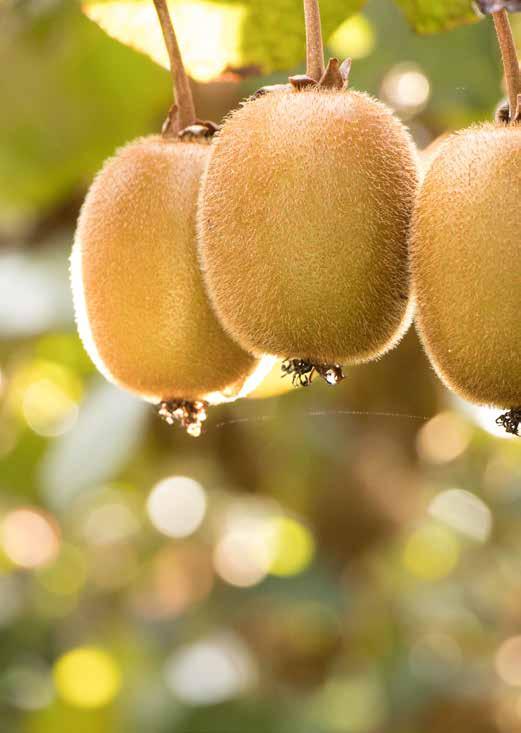
51
Case Study Impact & Sustainability Report 2022
Animal Welfare
Animal welfare is at the core of any good livestock farming business. We are responsible for the well-being of our stock, from birth to beyond the farm gate. New Zealand is a leader in animal welfare globally, being one of the first countries to enshrine animal sentience into law in August 2015. New Zealand enjoys a climate that allows livestock to be outside for 12 months of the year.
These effectively 'free-range', predominately grass-fed, dairy farming systems are much less intensive than most northern hemisphere systems, which involve partial or permanent housing of livestock.
Accordingly, the average standard of animal welfare in New Zealand, measured in terms death rate and fertility rate of our herds is very low compared to global comparators.
About the Data
1. Body Condition Score
Body Condition Score (BCS) is a metric that describes the visual condition of dairy cattle. BCS is determined by an independent vet who visits each farm and records the information based on visual inspections of the animals. BCS is measured on a scale of 1 to 10 –if the score falls below 3, urgent action must be taken to improve cow condition. A cow with a BCS over 6.0 is considered obese. High and low BCS predispose cows to disease, metabolic disorders, low productivity and low reproductive function, all of which imply compromised welfare.
2. Death Rate Percentage (Death Rate %)
All Craigmore farming operations align to the new standard of animal
with the Five Freedoms
measure and promote wellbeing
five realms: freedom from hunger and thirst; freedom from discomfort; freedom from pain, injury or disease; freedom to express normal behaviour; and freedom from fear and distress. Each of these targets the overall condition and wellbeing of the herd.
which includes
in-calf
Death Rate % provides a clear indicator of herd health and is directly related to good farm management practices that minimise deaths from extreme weather events and less than ideal management practices. Death Rate % is calculated as the number of mixed age cows and mature replacements (“R2s”) deaths divided by the number of wintered cows. There are no industry death rate reporting requirements. As a result, LIC death rate is based on non-audited reporting and Craigmore’s definition of death is more conservative e.g. includes animals that cannot be sold.
3. Six-Week In-Calf Rates
The six-week in-calf rate is a measure of the percentage of in-calf cows, six weeks after the start of the mating season. A high six-week fertility rate is a reliable indicator of good on-farm management, body condition, quality of feed and general animal and herd health.
welfare
which
across
Herd monitoring
death rate percentage and six-week
rates provide additional data points. Benchmark Craigmore Farming (dairy) Operations Body condition DairyNZ target 4.5-5.0 at dry-off 66% within range Death rate Livestock Improvement Corporation (LIC) 2.2% 3.7% 6-week in-calf rate DairyNZ Avg 67.8% 71.1% Animal Welfare Metric
Craigmore Sustainables 52
Animal welfare and herd improvement are at the forefront of the business model for Hayden and Mara at Darnley Farm, in North Canterbury. SmaXtec internal measuring devices were installed across this herd as an innovation trial to assess effectiveness of the technology.
SmaXtec technology is industry leading in monitoring dairy herd health. Designed to help farmers better understand their cows and improve animal health and welfare. The 10cm sensor is administered orally like a capsule and transmits continuous measurements from inside the cow.
At ten minutes intervals this data is transmitted and can be viewed on a computer or smartphone. The SmaXtec bolus technology monitors a cow across three key areas.
1. Health
The bolus has an extremely sensitive temperature detection system, which sends an alert if changes in core temperature are detected. This could be as a result of the cow’s immune system reacting to pathogens, injuries, or stress. Monitoring of physical activity and rumination of the animal gives a more complete picture of any health or stress issues. By detecting issues early before there are clinical signs of ill health, the farm team are better able to act and ensure the health and wellbeing of the animals.
2. Oestrus
Oestrus detection allows Hayden to identify the optimal time to inseminate each cow. Today’s dairy herds show shorter and weaker signs of coming into oestrus. The physical activity ‘bulling’ often occurs at night when there is no one to identify the increased activity of the in-oestrus animals. This can result in missing the period when a cow is cycling. With other on-farm commitments, it is often difficult to ensure robust oestrus monitoring. This heat detection technology means that these animals are detected and drafted automatically for insemination.
3. Calving
Through activity and rumination monitoring SmaXtec can detect when a cow is going to begin calving. This enables the team pay extra attention to the highest need animals and identity any calving issues early to ensure the health of both cow and calf.
Case Study Happy, healthy cows and a more efficient farming system thanks to SmaXtec
Impact & Sustainability Report 2022 53

Craigmore Sustainables 54 Social

Impact & Sustainability Report 2022 55
Health, Safety & Wellbeing
Health, safety, and the well-being of our teams is a core value of our business. We recognise our people, both employees and contractors, face day-to-day, sector-specific risks when working in our business. Craigmore promotes the use of best-practice health and safety protocols to protect the physical safety and mental well-being of our people and those who work with us.
We are creating a culture of safety across our business, ensuring every person receives the tools to work safely; the training they need to understand the risks they may face; and the instruction on the steps they need to take to keep themselves and others safe.
Core focus areas continue to be the management of critical health and safety risks, building company wide capability and confidence, partnering with contractors, and focused reporting. Our critical risk focus during this year has been on vehicle safety, machine safety, working at height, working in confined spaces and hazardous substances management.
The impact of the COVID-19 pandemic has been wellmanaged and therefore has had minimal operational impact on the business. The long-term effects are managed as part of our wellbeing programme.
There were no reported employee notifiable incidents, injuries, or illnesses during the year.
Total Recordable Injury Frequency Rate (TRIFR)
TRIFR is a measure of the frequency of recordable work-related injuries or illness for every 200,000 hours worked.
It is calculated by combining recorded fatalities, lost-time injuries and other injuries requiring treatment by a medical professional, multiplying that number by 200,000 and then dividing by the total number of employee hours worked or 'exposure hours'. TRIFR is a rolling 12-month metric.
About the data
Under the Health and Safety at Work Act 2015 a PCBU (Person Conducting a Business or Undertaking) must notify the regulator when certain work-related events occur.
Looking ahead
Our key deliverables are completing the work on critical risk management (especially in horticulture) and reviewing our internal and external assurance tools.
7 A notifiable event is when any of the following occurs as a result of work: a death, notifiable illness or injury, or a notifiable incident.
Craigmore data includes all Craigmore entities but does not include contractor or contract manager performance.
Craigmore Sustainables 56
TRIFR 10.6 Notifiable events7 0
Image 1: Installed barrier protecting vehicle operators from a steep edge
Image 2: Area cordoned off and planted with native trees to form a safety margin

Case Study
Horticulture safety barriers
We know through industry data, that the greatest risk of fatality on orchards arises from using vehicles on or near steep terrain. These statistics align with media coverage of agricultural sector fatalities, with reports often citing the use of quad bikes and other farm vehicles (e.g. tractors) as inherently hazardous.
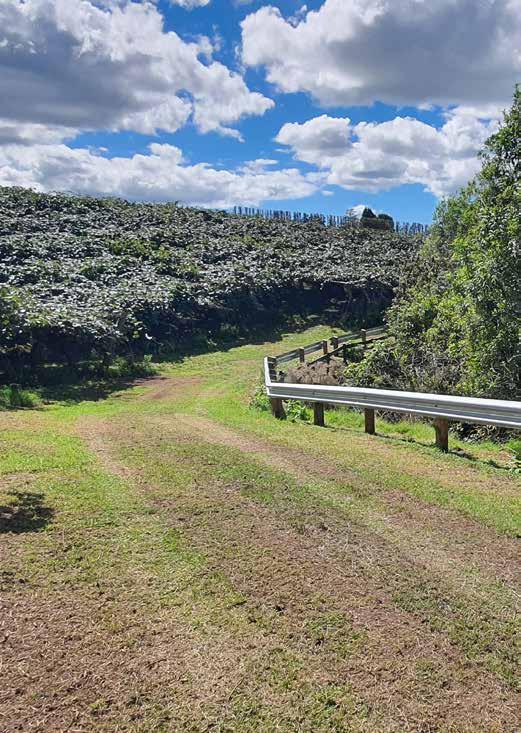
Craigmore has recently identified and installed barriers along those areas on some of our orchards where it was possible for a vehicle to lose control and go over a steep edge. These barriers are particularly relevant to roads or tracks where vehicles coming out of the rows of trees or vines and are going downhill towards a bank, or where the roads or tracks are narrow, and vehicles need to manoeuvre close to the edge (see Image 1).
In addition to installing the barriers, we have also planted “safety margins” in some areas and recognised other areas and are preparing these for planting in the future (see Image 2). Planted safety margins prevent vehicles getting too close to an edge as they no longer need to maintain that area (e.g. mowers). This solution is aimed at ensuring the weight of vehicles on an unprotected, and potentially soft edge, do not cause it to collapse, dragging the vehicle over.
Impact & Sustainability Report 2022 57
People & Communities
Growing the field
Craigmore aims to be a transformational
there is a better way to employ
in our rural communities.
can be inaccessible to some people due to seasonality, split shifts, long hours and physical requirements.
the adoption of new technology and new ways of thinking, we believe that we can make careers in the sectors in which we operate –farming, horticulture and forestry – more accessible, flexible and appealing.
future employment
job sharing, flexible hours, training programmes for all ages, living wages, permanent contracts and values-based employment with all our people. But we are not limited to just these ways of work – our conversations will evolve as innovations are implemented and industry cultures change.
includes New Zealand
Total Total % Farming Horticulture Forestry Other Number of people 253 95 120 2 36 Full-time 227 90% 89 105 1 32 Part-time 26 10% 6 15 1 4 Female staff members 87 34% 26 57 1 17 Male staff members 166 66% 69 63 1 19 Data includes people employed directly by a Craigmore-managed business in full-time or part-time roles. Data excludes contractors, casual workers and seasonal workers. Horticulture includes Coxco, a Craigmore Sustainables owned business. Other
office-based staff, and London-based investor relations team. Our Workforce 2022
employer in rural New Zealand. We believe that
people
Employment
Through
Our aspirations for
includes discussing
Craigmore Sustainables 58
Community Engagement Activities
Growing our rural communities
The majority of Craigmore operations are in rural areas where primary industries are major contributors to local economies. By creating employment opportunities, we are helping to bring new families into underinvested rural communities, as well as bringing new people into primary industries.
We strive to ensure that people have the opportunity to grow and feel valued when they work with us. We are advocates for upskilling and training people for their futures – with or outside of Craigmore – and ensuring that each person is remunerated fairly for their work.
This commitment extends beyond our people and into the communities in which they live. We contribute to schools, sports clubs and community activities through both our time and sponsorships, so that we are playing a part in contributing to stability in the regions.
Figure 8 details the numbers of activities that Craigmore staff have led or contributed to during the year.
Case Study
Keeping people safe on farms
Craigmore has had a focus on ensuring that our people have a proper understanding of how to operate and maintain vehicles to a safe standard.
Ant Sutherland from Sutherland On-Farm Solutions has provided practical on-farm training to all farm staff. Farm Managers were upskilled to become trainers and standard operating procedures were developed to support the training process.
Thanks to this process, we have seen an increase in the understanding of legal requirements, how to operate vehicles safely on flat and sloped terrain, as well as a reduction in vehicle repairs and maintenance. We also examined how our people were using vehicles and identified that towing irrigation pods on sloped terrain was a potential hazard. This practice had been the norm on several Craigmore farms, but it is a high-risk activity which could, in some situations, cause the vehicle to roll-over and cause injury to the operator.
Fixed grid irrigation, which replaces portable irrigation pods, was identified as the most appropriate solution. This change removed the hazard but also increased grass growth and used irrigation water more efficiently.
activities
Figure 8 Community
Schools 5Community Support 20 Sports Clubs 5 2 Volunteering Impact & Sustainability Report 2022 59

60
“To have a teacher that cared about us and our future was awesome. It’s opened my eyes to a future that I didn’t think I’d have when I left school.”
Tia (15) Craigmore Sustainables
Horticulture training programme for young adults (rangatahi)
Ben James, Craigmore’s business manager for apples, knows all too well that once horticulture gets its hold on you, you can’t escape it. Now thanks to a pilot programme run in conjunction with registered training provider, Fruition Horticulture, Ben and the Springhill team have been able to help ten young people from Central Hawke’s Bay to establish their own career pathways in horticulture.
Tū Te Wana Programme supports young people aged 16-19 to achieve a combination of nationally recognised qualification credits and practical skills (such as drivers licence) through a 16-week programme.
With the guidance of Jordan Hetterley working as kaiako (programme facilitator/teacher) the group successfully completed level 2 unit standards in horticulture and graduated on 5 August 2022.
For Tia (15), Hallie (17) Raiden (16) the impact of the programme has been “life changing”. Tia, Hallie and Raiden agree that the support they received, and the self-esteem and confidence they gained through the programme has given them a new perspective on work.
As part of the programme the group completed 24 days of work experience, spending two or three days a week at Springhill learning practical skills such as pruning, thinning and tree husbandry.
Tia, Hallie and Raiden all aim to find full time employment or move on to further training courses to develop their work readiness. Craigmore has subsequently employed three of these rangitahi (students) on a full-time basis.
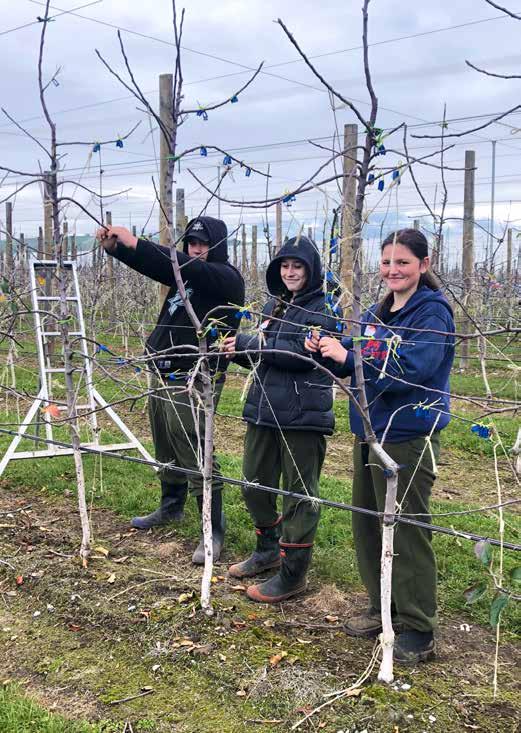
Case Study Impact & Sustainability Report 2022 61
Excellence in farming acknowledged with two awards
Craigmore’s farming team named winners of the Fonterra Responsible Dairying Award winners during the New Zealand Dairy Industry Awards in May 2022, receiving the John Wilson Memorial Trophy.
The prestigious award, accepted by Farming General Manager, Stuart Taylor and Agri Relationship Partner, Caroline Amyes (pictured top right), recognises dairy farmers who demonstrate leadership in their approach to sustainability and who are respected by their fellow farmers and their community for their attitude and role in sustainable dairying.
Craigmore stood out due to the focus on adapting individual farm systems to the land, resources and the people involved. The judges were impressed by Craigmore’s philosophy of adapting the farm system on each one of their 22 farms to suit the environment and the people.
“Craigmore are leading change and using different innovations on different farms to help create solutions that other farmers could then use, including dung beetles, working on their significant natural areas, a composting barn, boluses and are trialling Halter on one of their farms,” say the judges.
“Just like every farmer, Craigmore are on a journey and are continually seeking ways to grow and challenge themselves.”
Craigmore’s Kirikiri Dairy Limited in Mid Canterbury were the proud recipients of Synlait’s Supreme Lead With Pride Award for 2022.
Business Managers, Dion and Kristie Gordon (pictured bottom right, centre), accepted the award which acknowledges the very best of the Lead With Pride farms. Kirikiri Dairy was also recognised for their achievement gaining gold elite certification for last season.
The winners are assessed based on their ability to demonstrate a high level of engagement through supporting Synlait to grow and develop the program; going above and beyond the standards expected in areas of their farming operation; and consistently maintaining high standards on the farm and achieving excellent farm audit results.
“They are genuinely curious to investigate options to achieve results on farm with a willingness to try practices such as soil conditioners and solar energy. They ensure their teams know what is happening and that they are involved with the initiatives on farm. They clearly have an outstanding partnership with their farm managers – who are achieving some great things across both farms.”
like every farmer, Craigmore are on a journey and are continually seeking ways to grow and challenge themselves.”
Case Study
“Just
Judging panel Craigmore Sustainables 62


63
Case Study
Two compete as finalists in the Hawke’s Bay Young Fruit Grower of the Year
This year Craigmore were thrilled to support staff enter the Hawke’s Bay ‘Young Fruit Grower of the Year’ competition and compete in the finals. Held in May 2022, Nga Stanley and Junior Vaai were among eight finalists competing in a competition that tested them on a range of theoretical and practical modules.

Nga and Junior entered the competition – which was established in 2003 to showcase careers in horticulture – for the first time. It was fantastic to see Nga win three sections in the practical skills test that covered health and safety, market access, horticultural business, pest and disease, fencing, tractors, pruning, and irrigation.
Craigmore team members have a long history with this competition: Graeme Hodges, Springhill, entered in 2003 and 2007 going on to win in 2014. He continued his involvement as competition organiser from 20152021. Ben James, business manager for apples, won the title in 2012 and 2013, going on to win as Young Grower of the Year in 2013. Wade Miller, Springhill, entered 2018 and went on to place second in 2019 and Lyssa Jones, also from Springhill, entered the Central Otago competition in 2019.
Craigmore Sustainables 64
Case Study
Nga Stanley, Labourer and Junior Vaai, Orchard Supervisor, both working at Springhill apple orchard share their thoughts on working in the horticulture sector and the opportunities available to them.
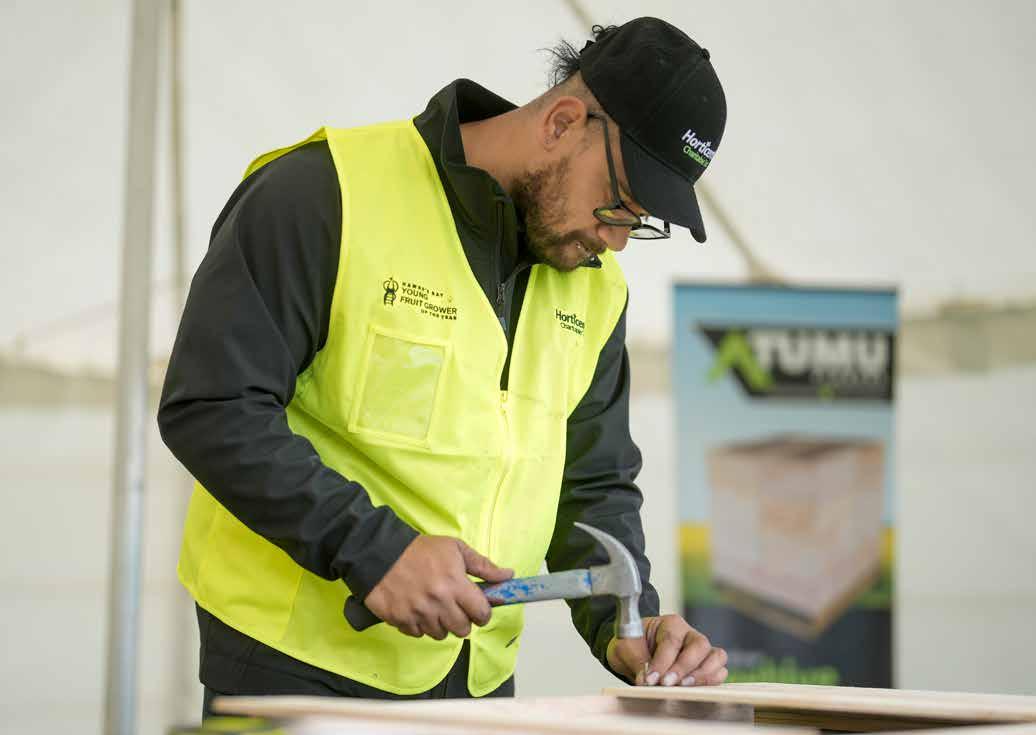
Nga says he made the jump to horticulture because of what he saw as the incredible opportunities. Having completed his Level 4 certificate in Horticulture through the Eastern Institute of Technology (EIT), he is inspired in life by his family and his young daughters as well as the community of growers with whom he is connected.
For Junior the thing he enjoys the most about the industry is the teamwork. He’s also learning about technology and use of new machinery, which he sees as a good learning opportunity for both him and his team. He credits his manager for equipping him with skills to aid in communications especially with staff employed through the RSE (Recognised Seasonal Employer) scheme.
Impact & Sustainability Report 2022 65
First-hand experience: Nga and Junior reflect on a career in horticulture
Case Study
Building high performing teams in farming
The belief that our people are best positioned to make decisions about what happens on their farms is at the heart of the Craigmore values. Giving them the space and support to do just that is the driving force behind the introduction of the High Performing Teams Programme launched in the farming business in 2022.
Run over 12-months, leaders in the business are taken through a programme of coaching and mentoring that equips them with tools to motivate and inspire their people and challenge their thinking to ensure they are getting the best out of their teams.
The programme began with a two-day intensive workshop in June and will follow with leaders reporting back to the cohort on a regular basis providing and update on their progress. They are taken through modules on Personal Leadership,

Performing Teams
framework
Leading Others, Practical Management and Effective HR, as outlined in Figure 9
As a result, we hope to have managers who can run multiple farms, future leaders who are recognised and developed, and good succession management is in place. We want to see leaders who are capable of leading high performing teams, and that consistent HR processes and agreed practices for managing farms are common right across the farming portfolio. The initiative is acting as a pilot with Rural Leaders to accelerate leadership right across the farming sector. The hope is that with government support, the programme will support farmers into the Kellogg Rural Leadership Programme and Nuffield New Zealand Farming Scholarship.
Craigmore Sustainables 66
Practical Management
Personal Leadership
High
Performing Teams
Effective
HR
Leading
Others
Figure 9 High
Programme
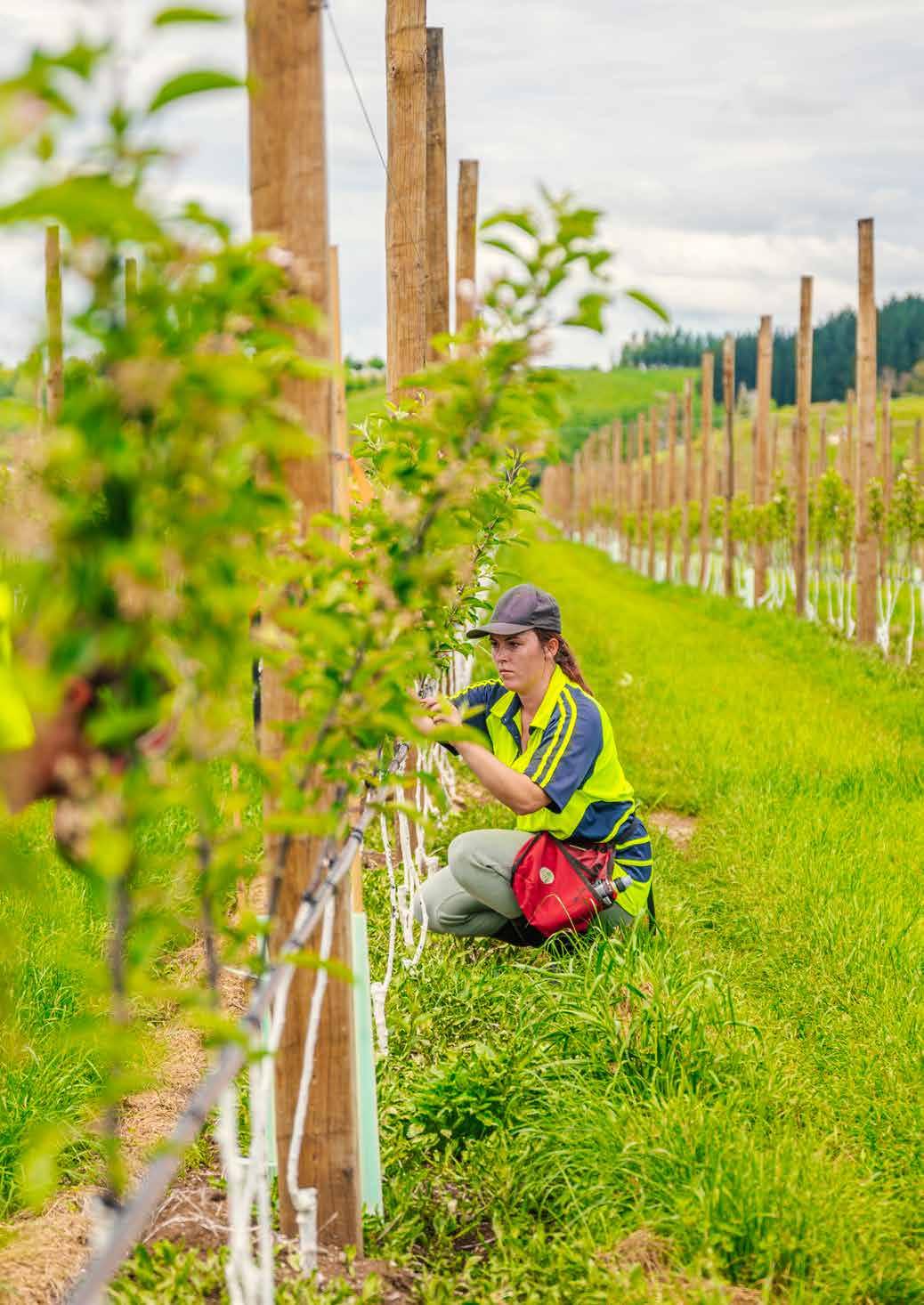
Impact & Sustainability Report 2022 67

Craigmore Sustainables 68
Thank you to our Limited Partners, stakeholders, and the people of Craigmore for their ongoing commitment and support on our sustainability journey. Feedback We welcome any feedback you have on this report – please email: investorrelations@craigmore.com To find out more, visit Website www.craigmore.com LinkedIn craigmore-sustainables























 John Holland Andrew Gibbs Che Charteris Forbes Elworthy John Donkers Mark Cox Nick Tapp Josef Nägel
GP Board Observer
John Holland Andrew Gibbs Che Charteris Forbes Elworthy John Donkers Mark Cox Nick Tapp Josef Nägel
GP Board Observer






























